November 16, 2020 - Palm Springs Air Museum
|
|
After checking out of our fancy digs in Indio, Stan and I drove 25 miles or so northwest up Interstate 10 to Palm Springs. Stan was catching a flight back home from the Palm Springs Airport later in the day. We had some time to kill so we checked out the Palm Springs Air Museum.
I find it difficult to know from an air museum's web page what to expect. You can look and see what kind of planes they have but that rarely tells the entire story. So it was with the Palm Springs Air Museum. They did have an excellent collection of aircraft but it was their extensive displays, models, aviation art and excellent presentation which made this an outstanding air museum.
|
| |
 |
|
|
As soon as we stepped into the museum and I looked up at this gigantic mural, I knew this air museum was going to be good. Pictured are four SBD Dauntless dive bombers starting their run on a Japanese aircraft carrier at the Battle of Midway.
|
| |
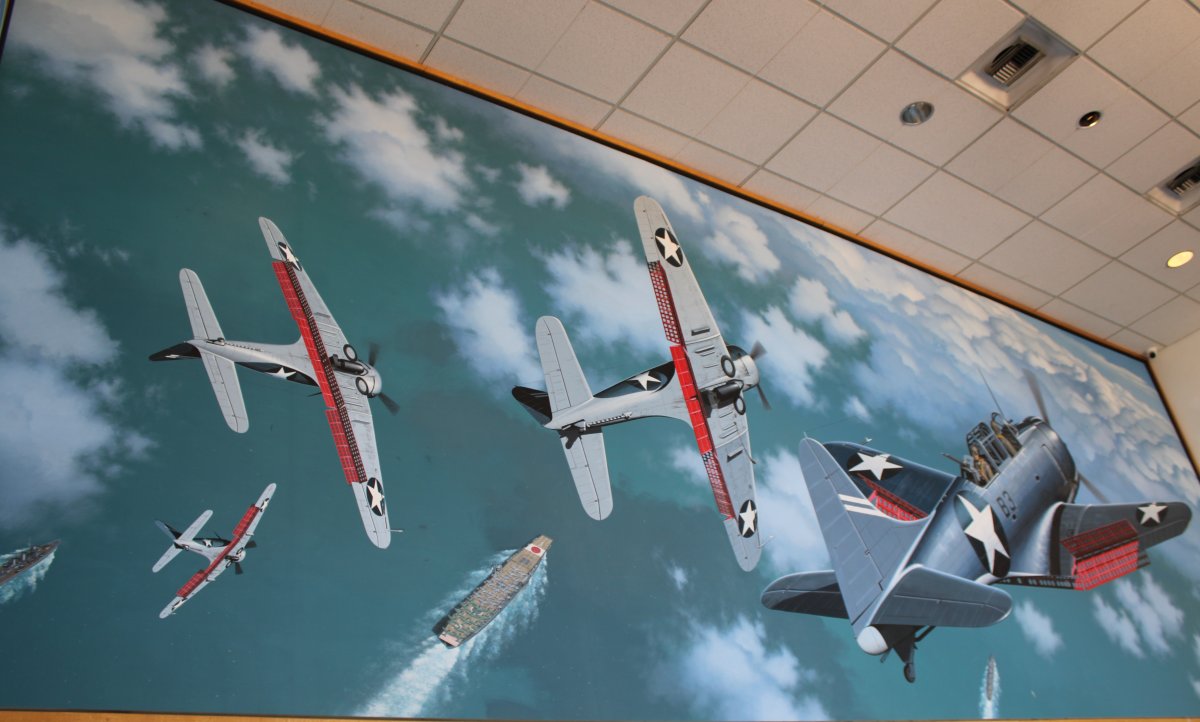 |
|
| Another unusual aspect of this museum is that it consists of multiple large hangars, and on a nice day, such as today, they open the hangar doors. |
| |
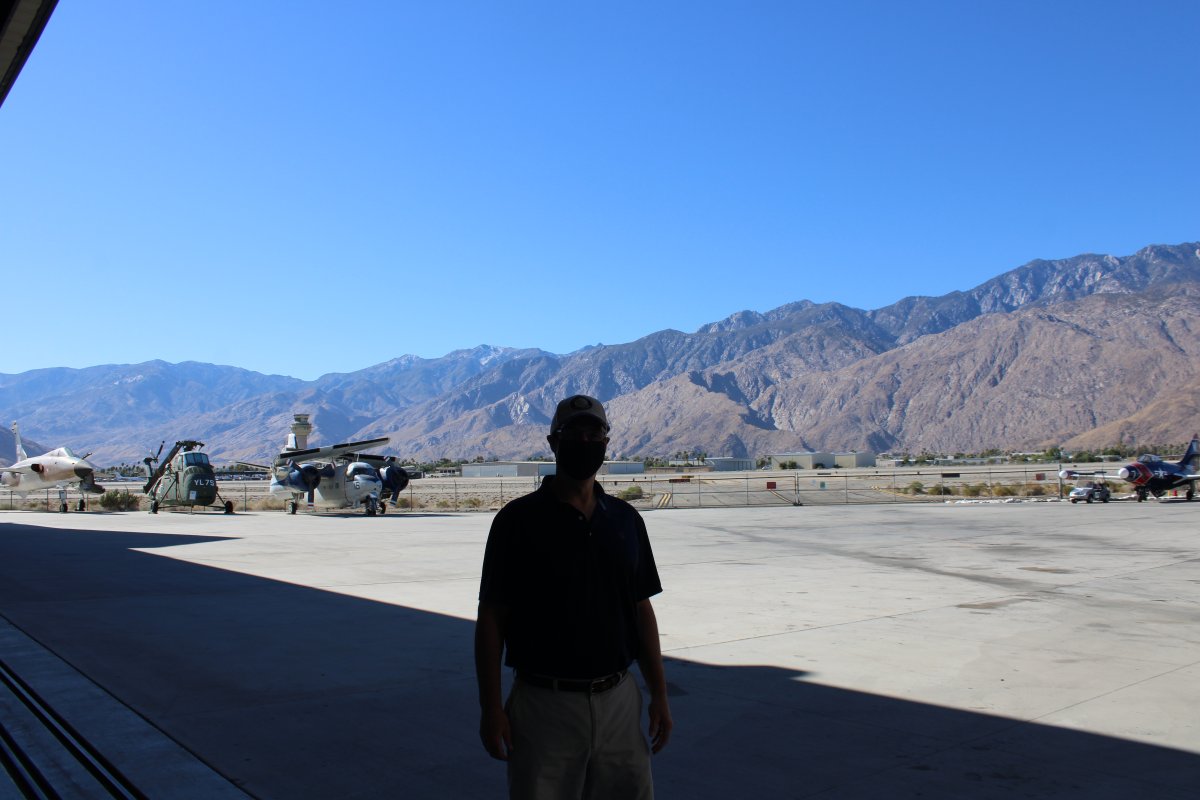 |
|
|
A Stearman and Mustang look great out in the sunshine.
|
| |
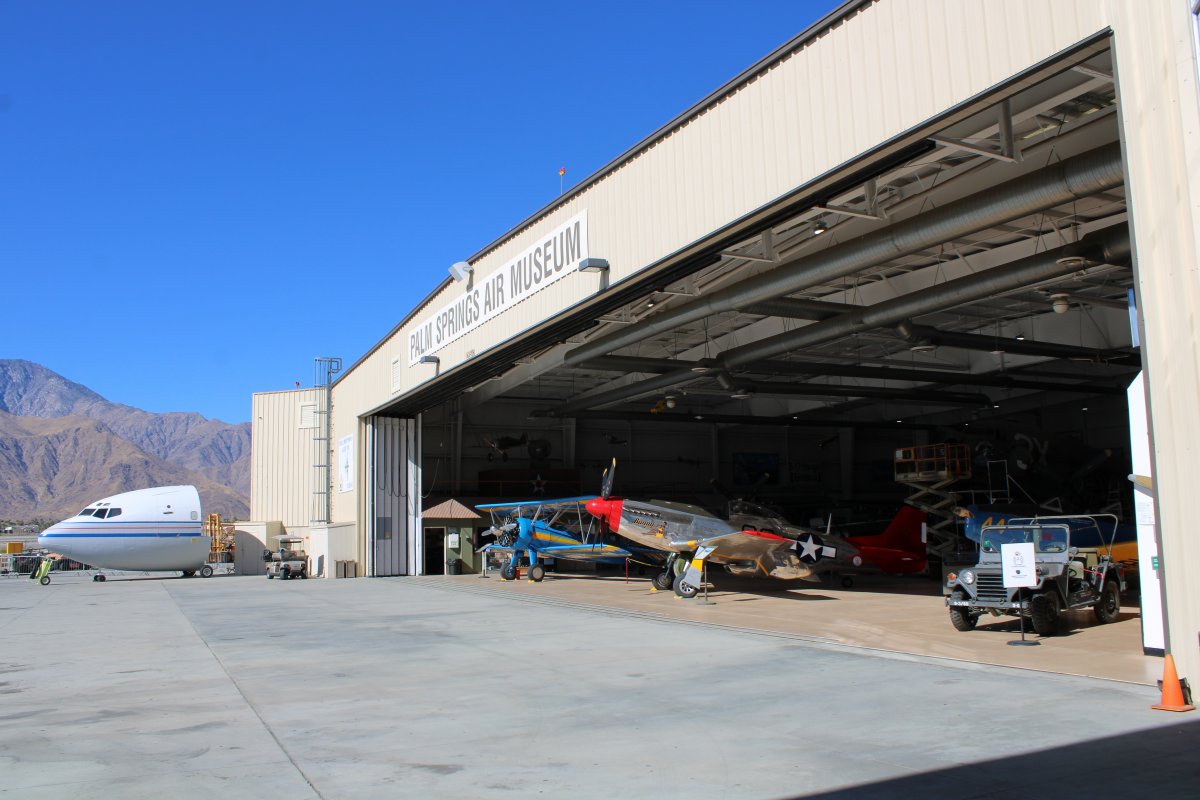 |
|
| A diorama of Pearl Harbor -- Ford Island and Battleship Row -- on the morning of December 7, 1941. |
| |
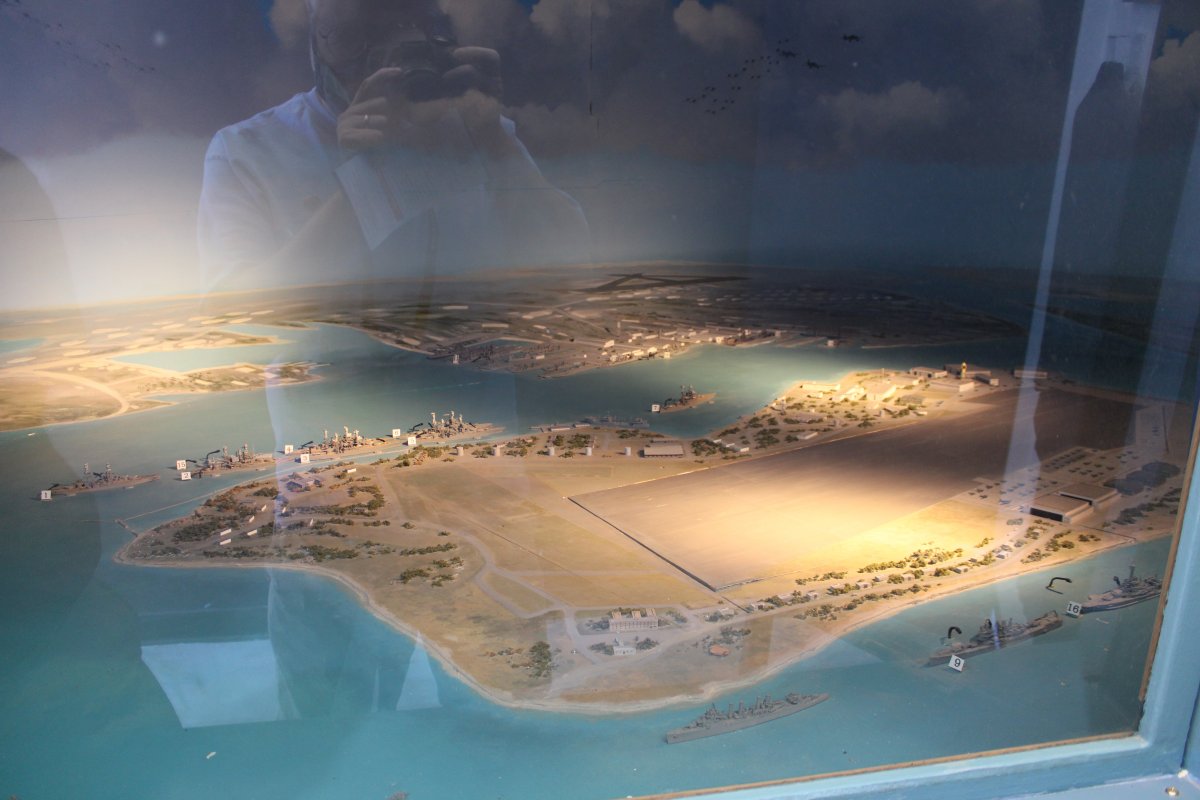 |
|
|
An amazing model of the USS Hornet aircraft carrier as it looked carrying sixteen B-25 medium bombers for the Doolittle Raid to bomb Tokyo on April 18, 1942.
|
| |
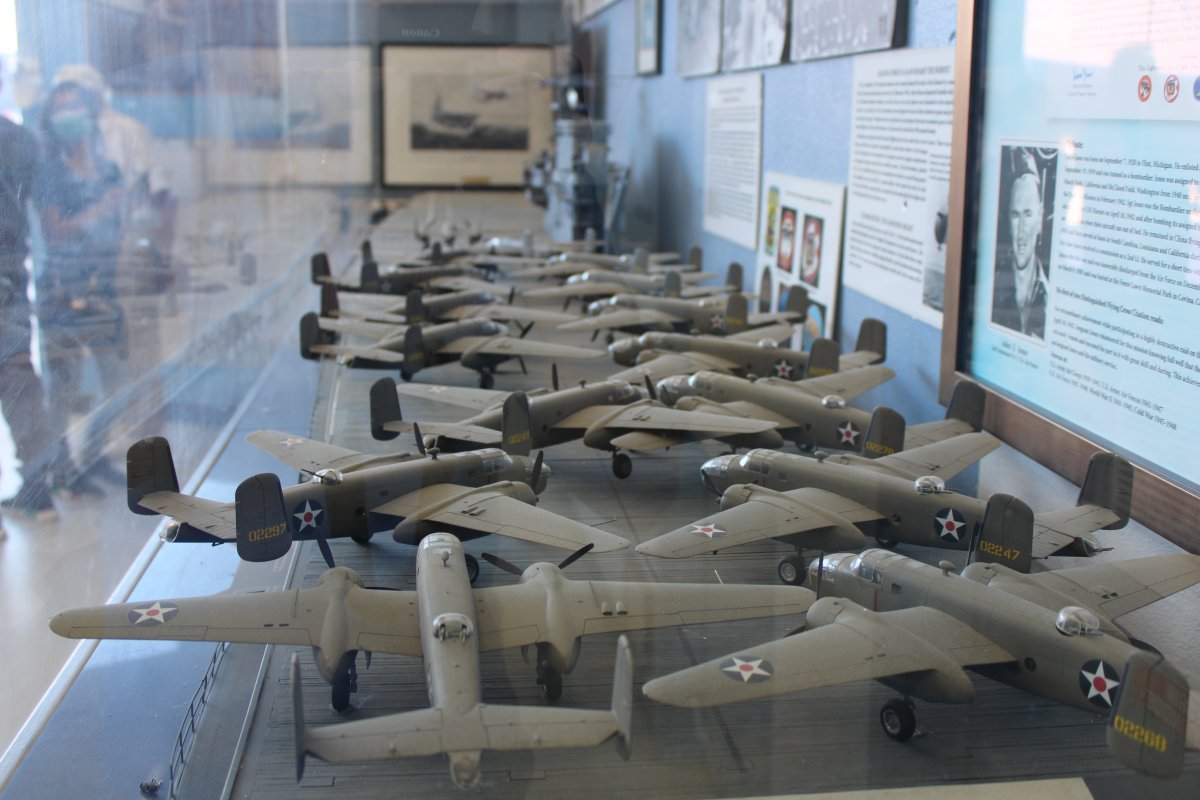 |
|
| An immaculate F4F Wildcat. |
| |
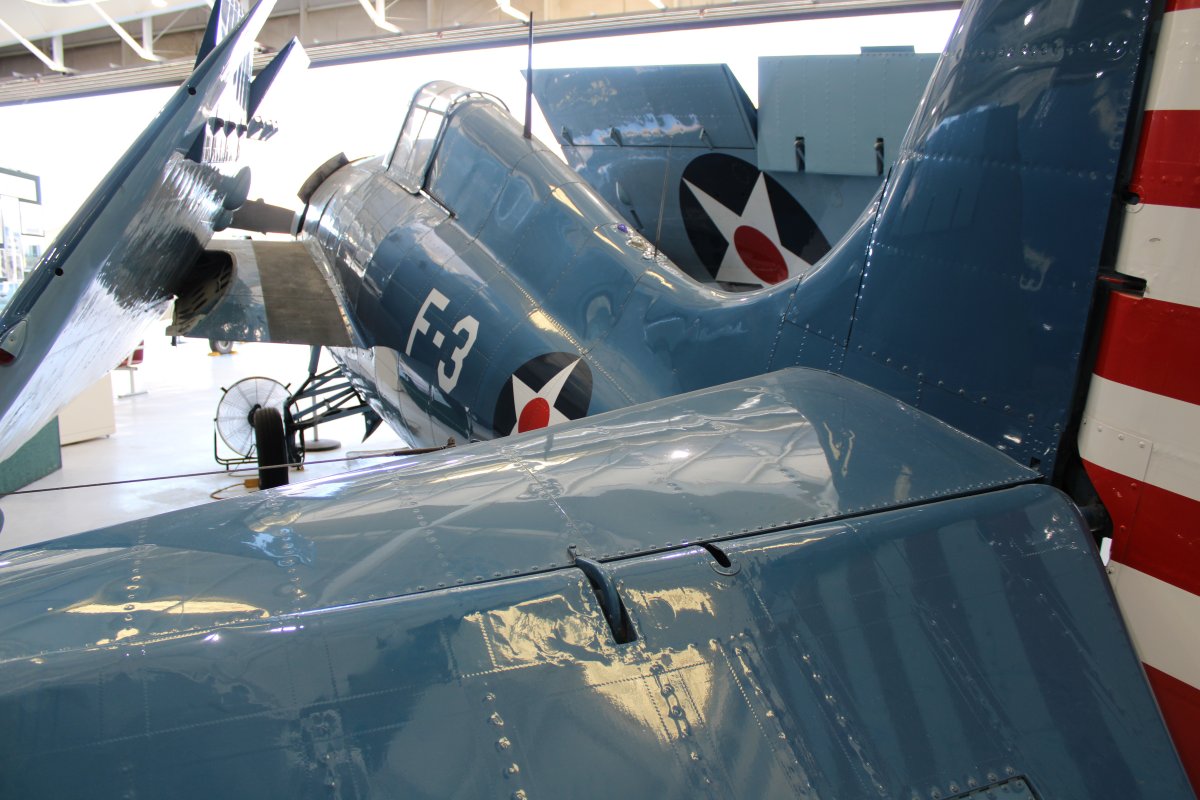 |
|
|
Another huge mural of an F4U Corsair turning final to land on an aircraft carrier.
|
| |
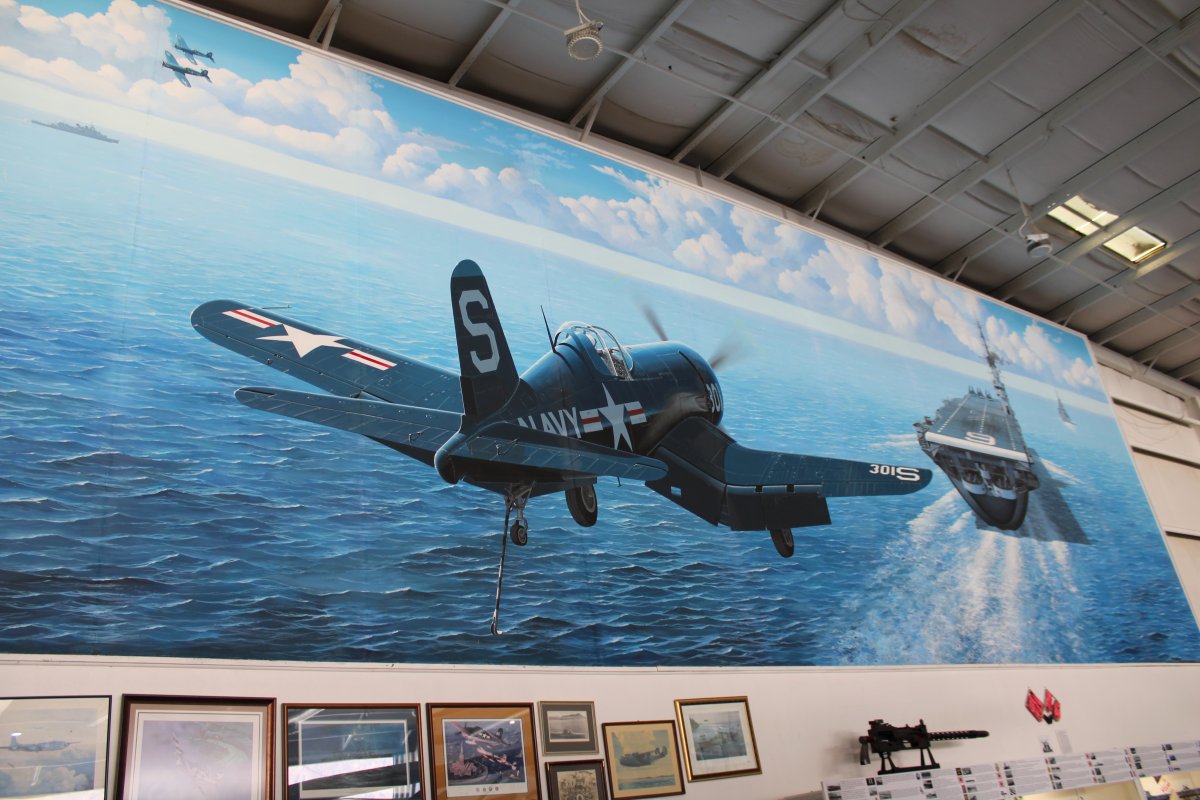 |
|
| The last year or so I've been into warships and warship models. This is a huge, extremely well done model of the USS Lexington (CV-2) aircraft carrier, which was sunk at the Battle of the Coral Sea. The Lexington's sister-ship USS Saratoga survived World War II. |
| |
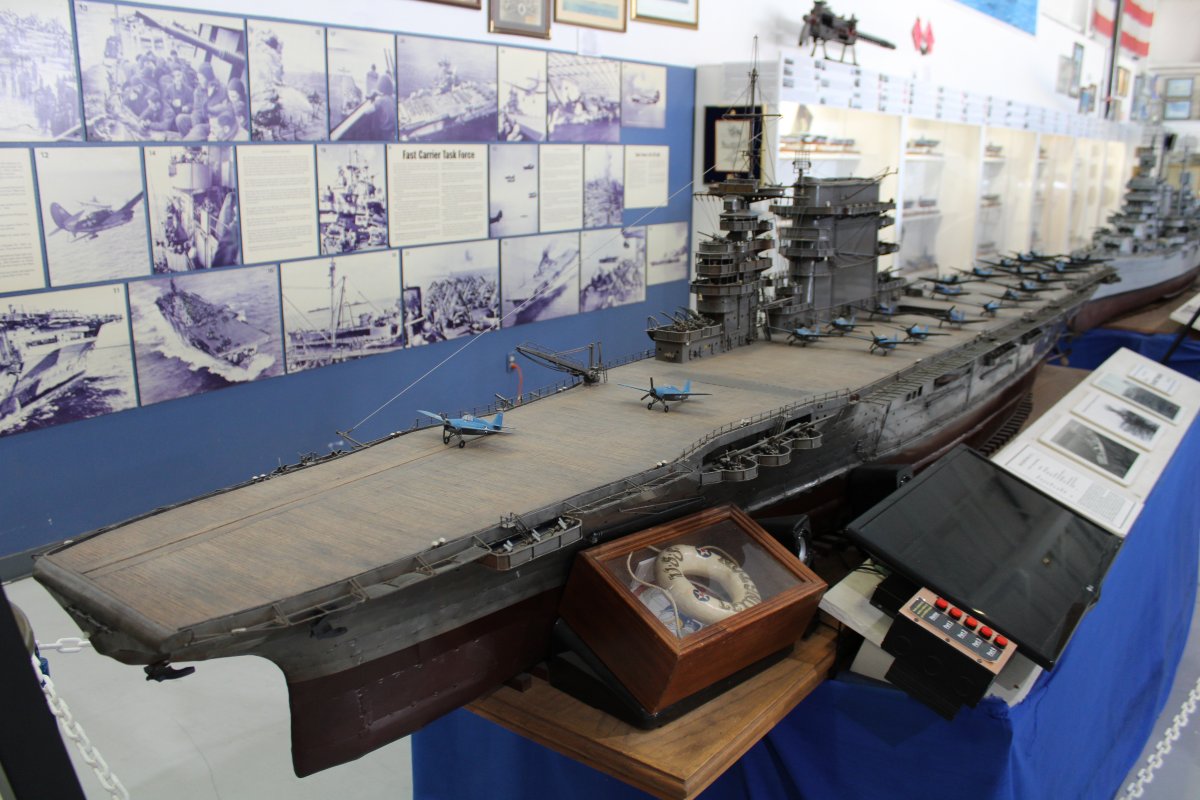 |
|
Another large model, this one of the USS Minneapolis (CA-36) which was a New Orleans-class heavy cruiser. Her main batter were nine eight-inch guns. Seven were built in the 1930s. Three were last in the night surface action Battle of Savo Island which took place on August 8–9, 1942. The remaining four served with the fast carrier task forces in the Pacific throughout the war. They were some of the most used and hardest fought ships of the US Navy during the war. |
| |
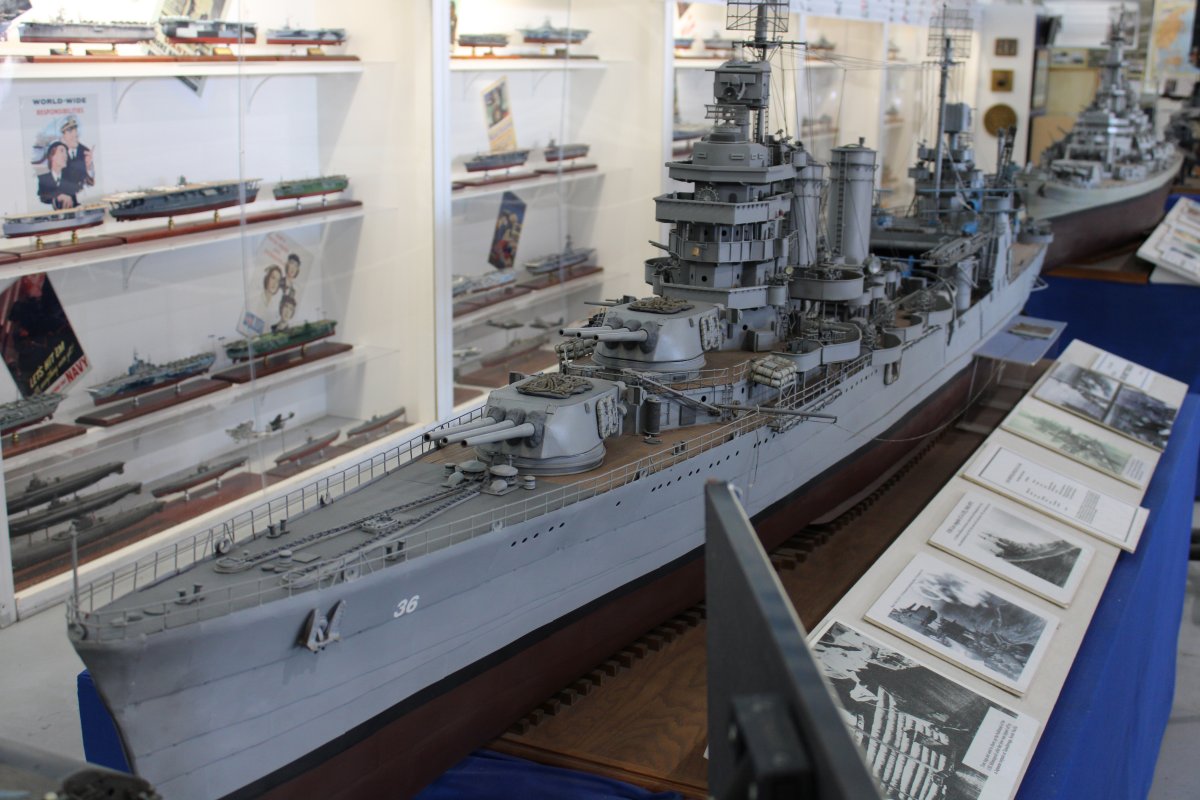 |
|
| The USS Missouri (BB-63), an Iowa-class battleship with an impressive array of smaller warship models behind it. MIssouri's main battery was nine sixteen-inch guns. |
| |
 |
|
|
This model of USS Rasher (SS-269), a Gato/Balao-class World War II submarine, was fascinating with its side cut away so you could see the inner workings of a diesel submarine.
The Rasher was one of 190 Gato/Balao class built. In combat she sank 19 enemy ships totaling 99,900 tons.
This design formed the majority of the United States Navy's World War II submarine fleet.
|
| |
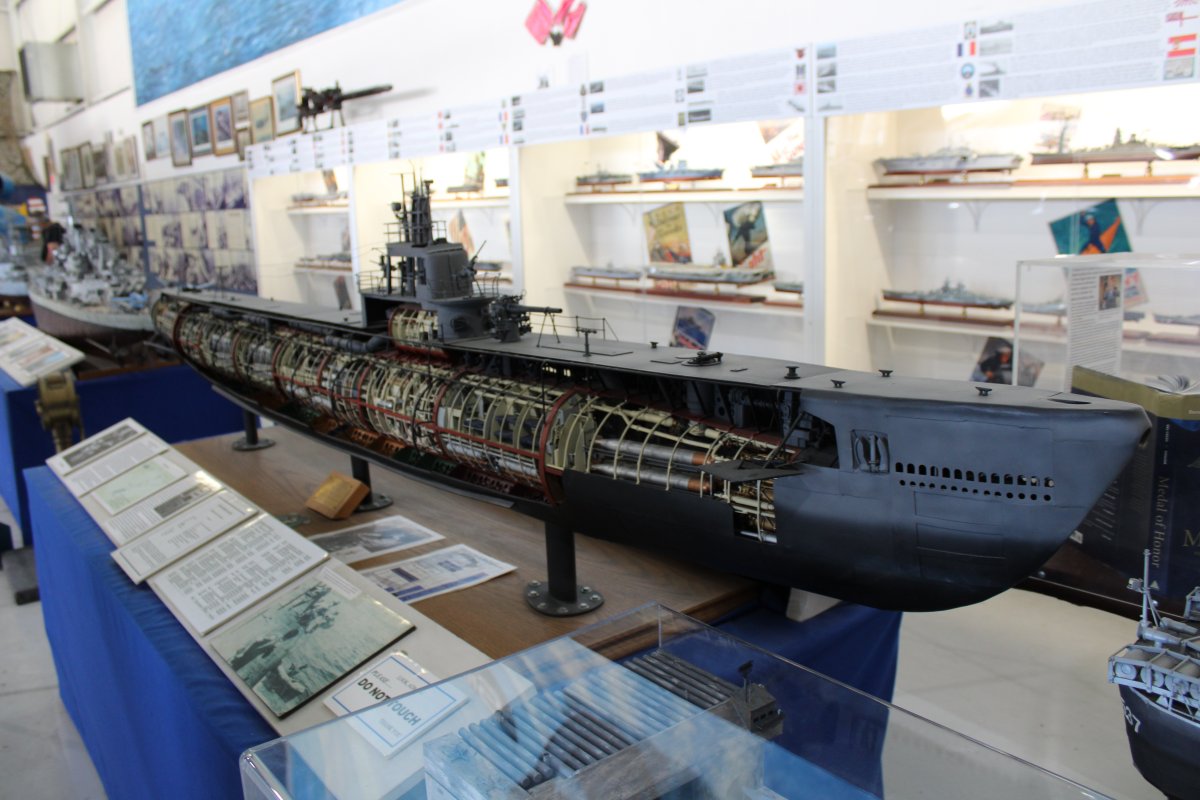 |
|
|
Another cut away model, this one of the USS The Sullivans (DD-537), a Fletcher-class World War II U.S. destroyer. The ship was named in memory of the five Sullivan brothers who were killed at the same time aboard the light cruiser USS Juneau (CL-52) when she was sunk during the Naval Battle of Guadalcanal, November 13, 1942.
175 Fletcher-class destroyers were commissioned between 1942 and 1944. This highly successful designed served in every aspect of the war in the Pacific.
|
| |
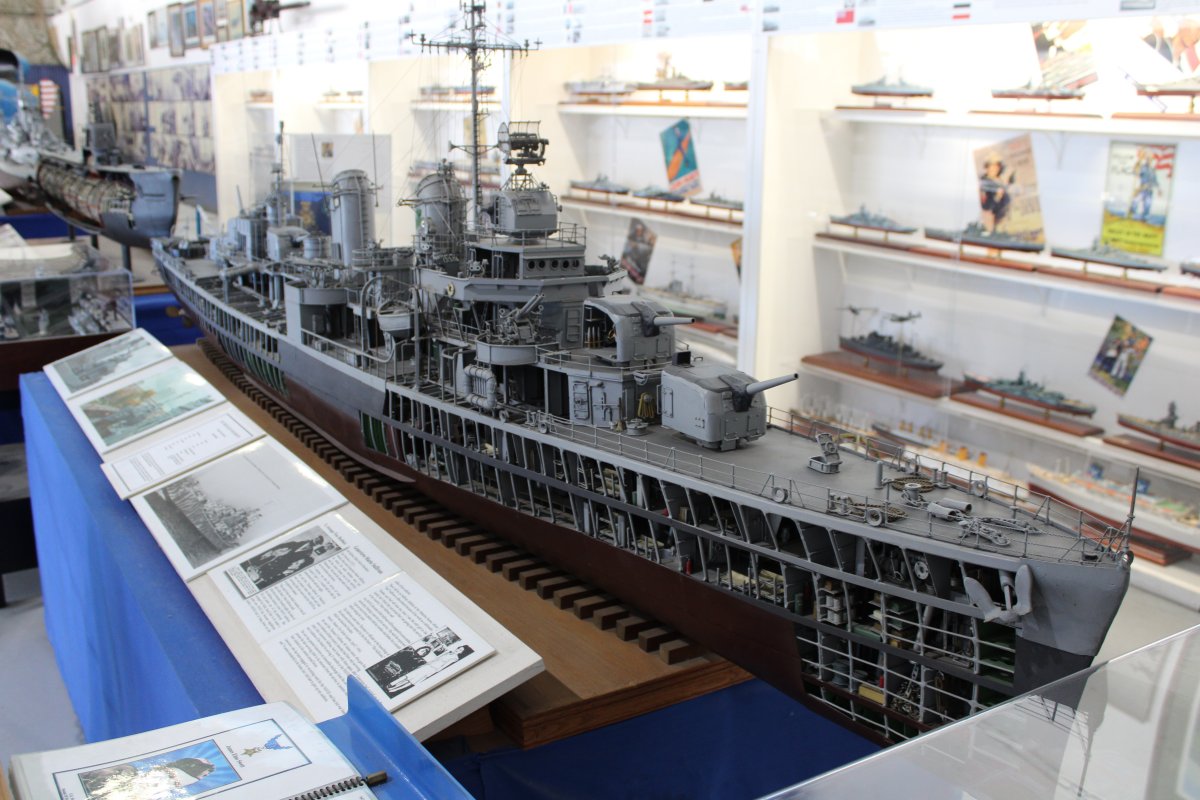 |
|
| Nice model of the Titanic. |
| |
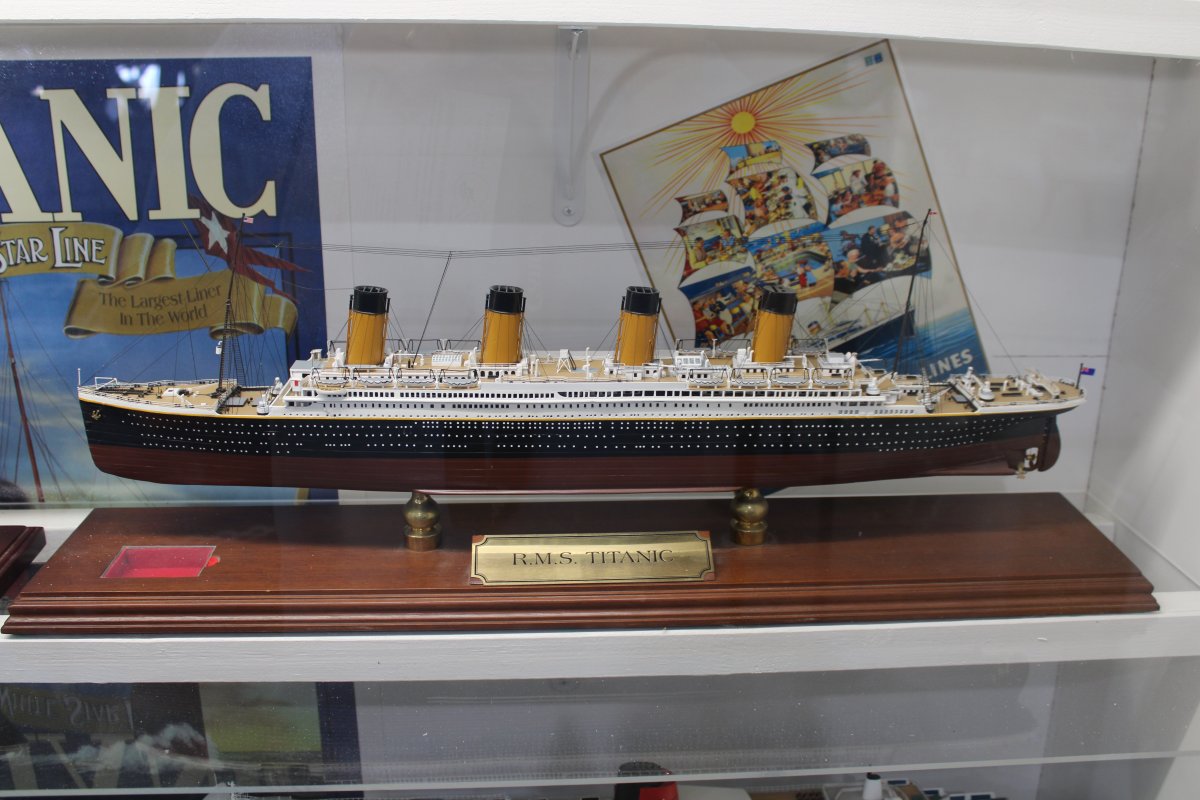 |
|
| Did you know the Germans nearly had an aircraft carrier in World War II? It was the Graf Zeppelin and this is a model of how it might have looked had it completed. It would have carried a carrier-version of the Me-109 fighter and Stuka dive bomber. |
| |
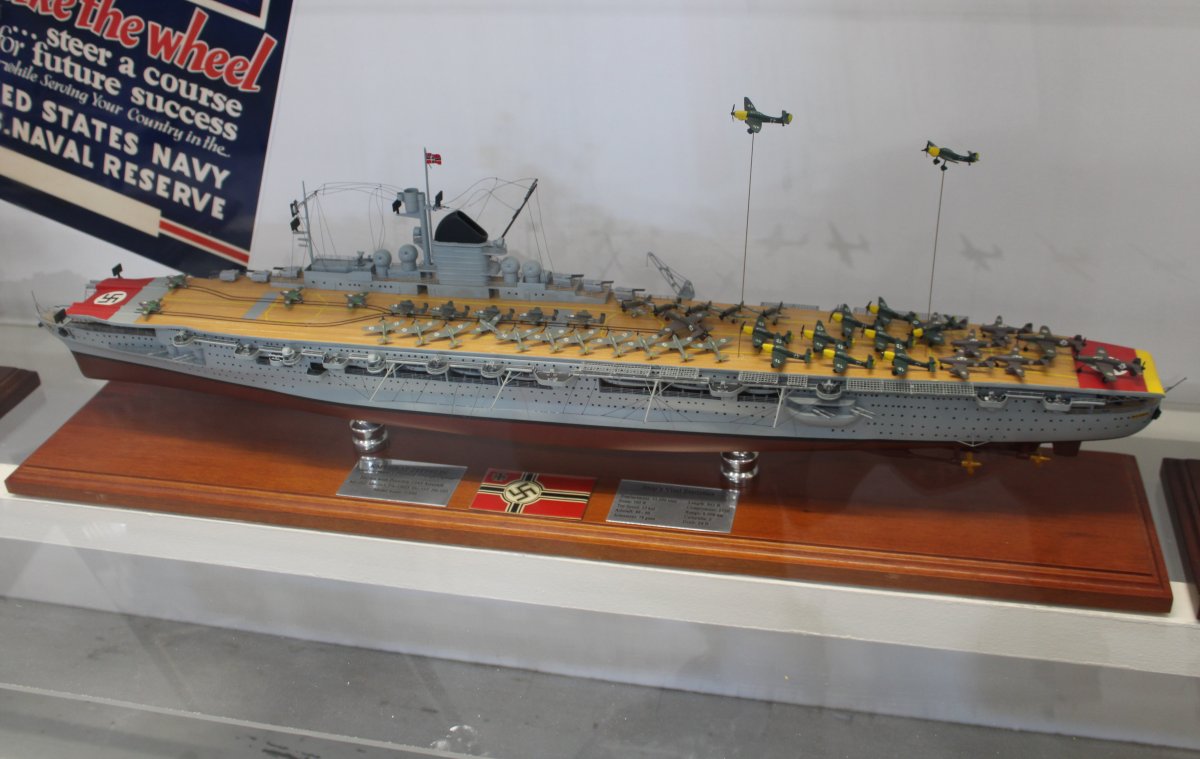 |
|
| A model of the Japanese WWII aircraft carrier Akagi, sunk at the Battle of Midway on June 4, 1942. |
| |
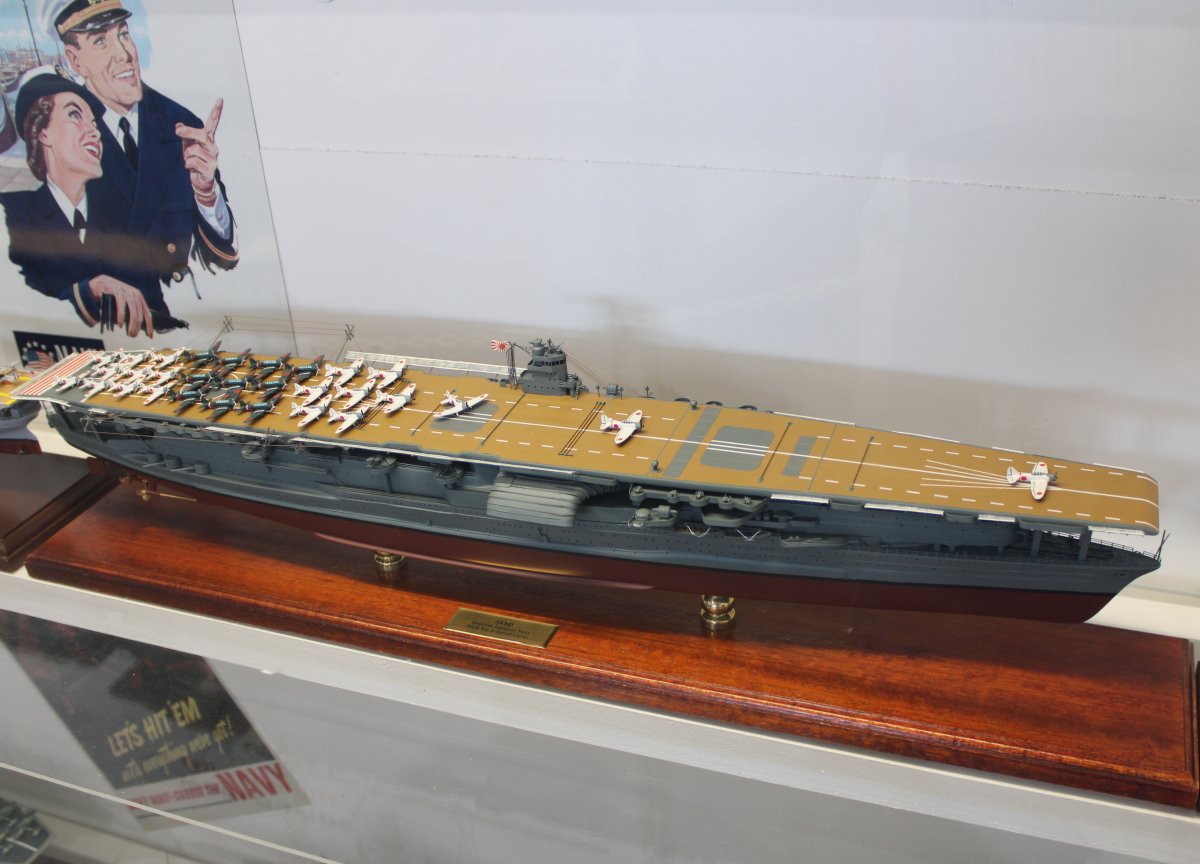 |
|
This model is of the USS Card (CVE-11), a Bogue-class escort carrier. My brother-in-law Bruce's Dad served on the Card during World War II. The Card primarily served in the Atlantic performing anti-submarine warfare. It was the second most effective escort carrier with eleven U-boat kills. The escort carriers typically carried Wildcat fighters and TBM Avengers which could carry bombs, depth charges, a homing torpedo, rockets, and sonobuoys. |
| |
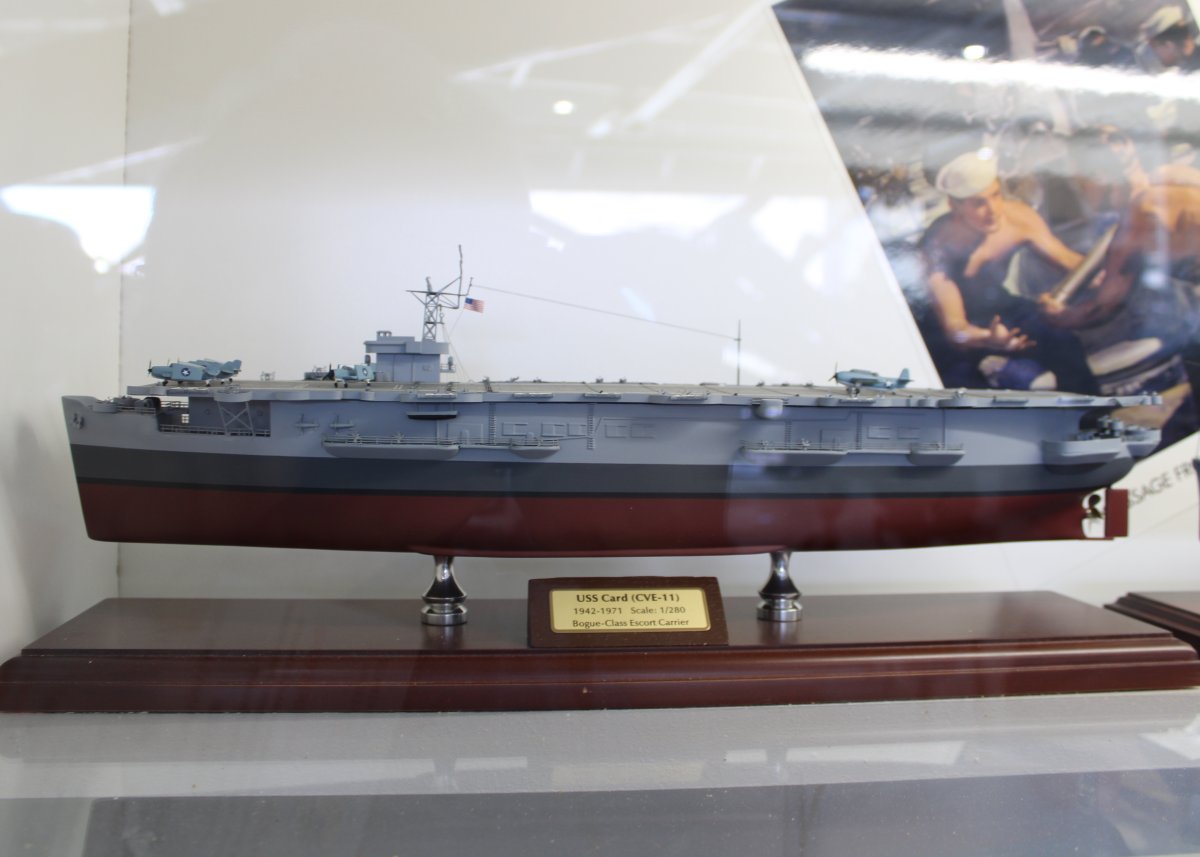 |
|
| An immaculate Grumman F7F Tigercat. |
| |
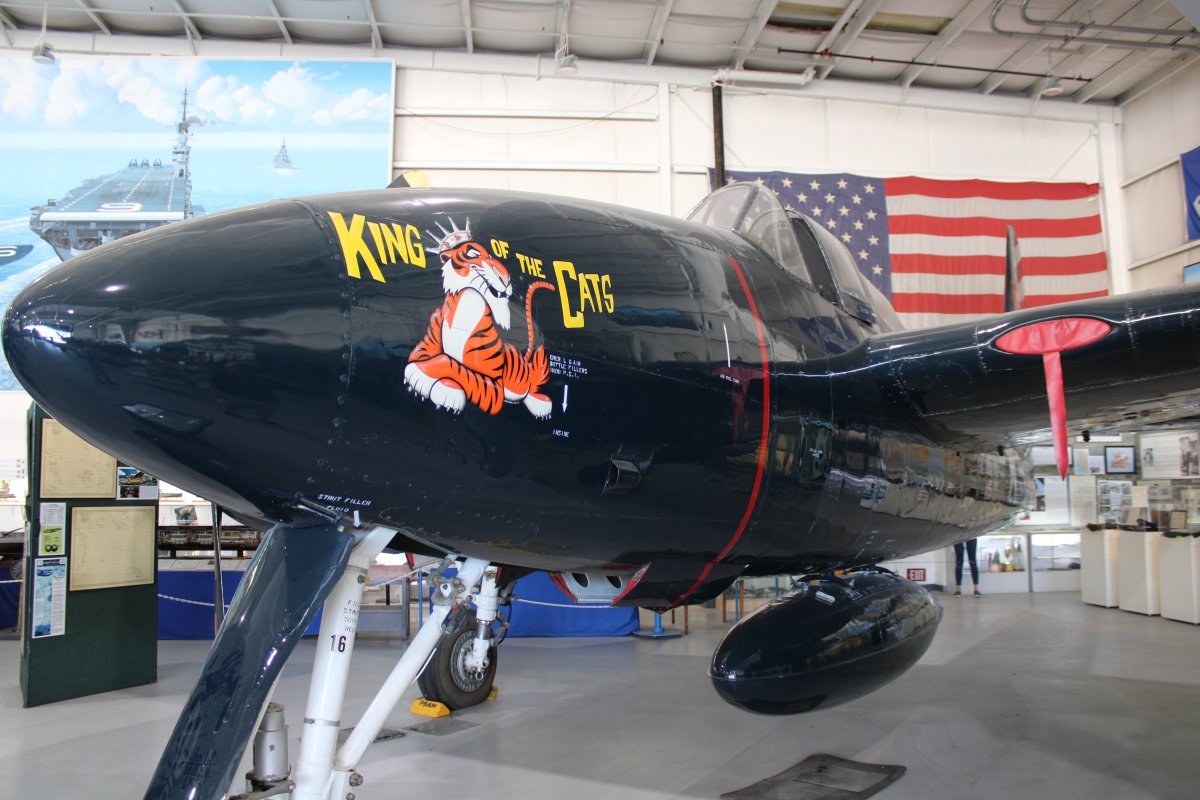 |
|
| It may not have been the best fighter plane of World War II but the P-40 Warhawk sure did look good! Of course, warbirds never looked this good on the front lines in combat. |
| |
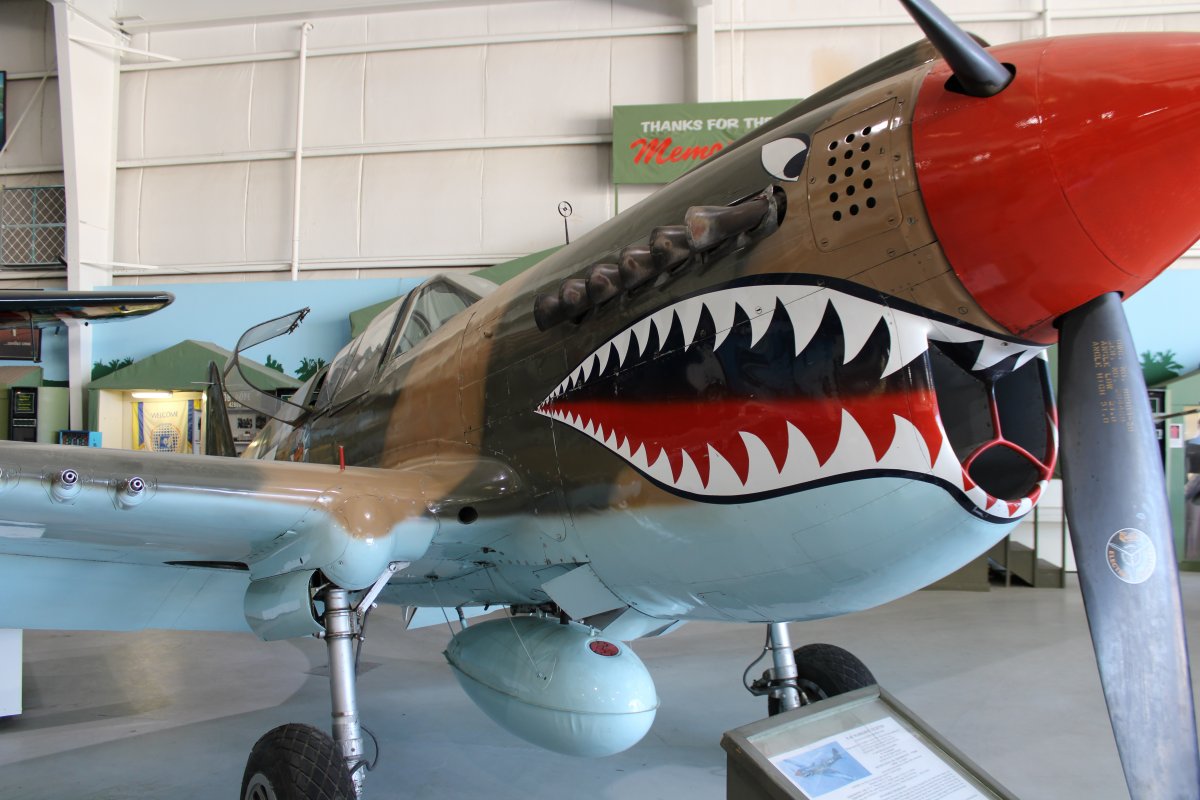 |
|
Stan checking out a Grumman C-1 Trader, an aircraft carrier onboard delivery (COD) plane, in which he once flew in as a passenger. |
| |
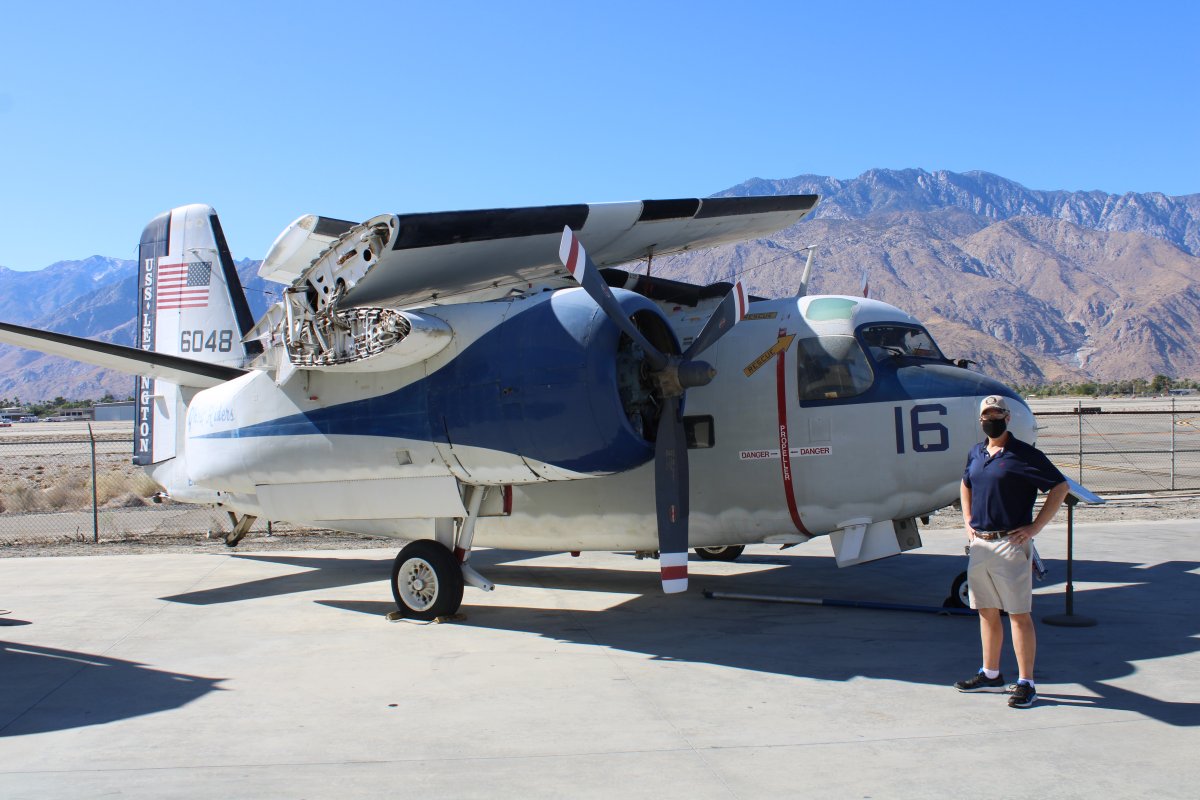 |
|
| A big, immaculate P-47 Thunderbolt. On the ground, it looks too big and barrel-shaped to be a fighter, but in the air it was graceful with its eliptical wings. P-47s were highly effective as ground support aircraft. They could dogfight pretty well too. |
| |
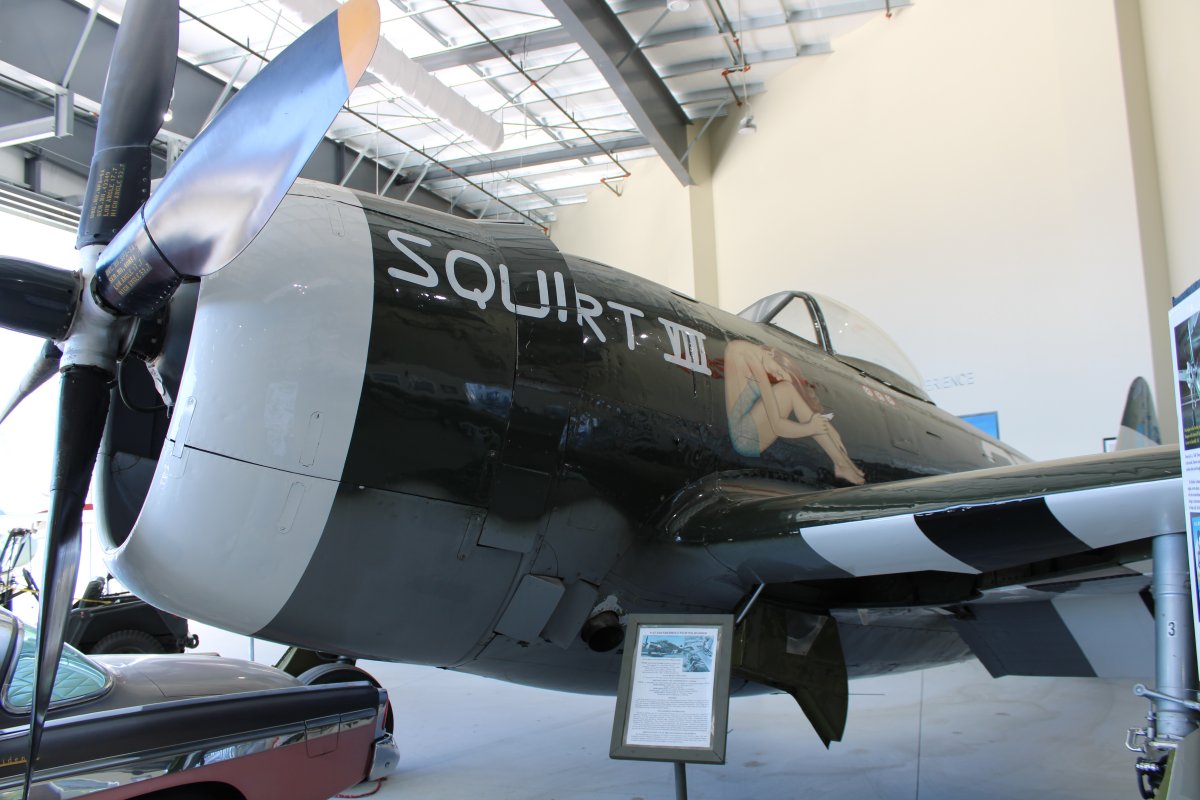 |
|
| The "Jug" is worthy of a second look. |
| |
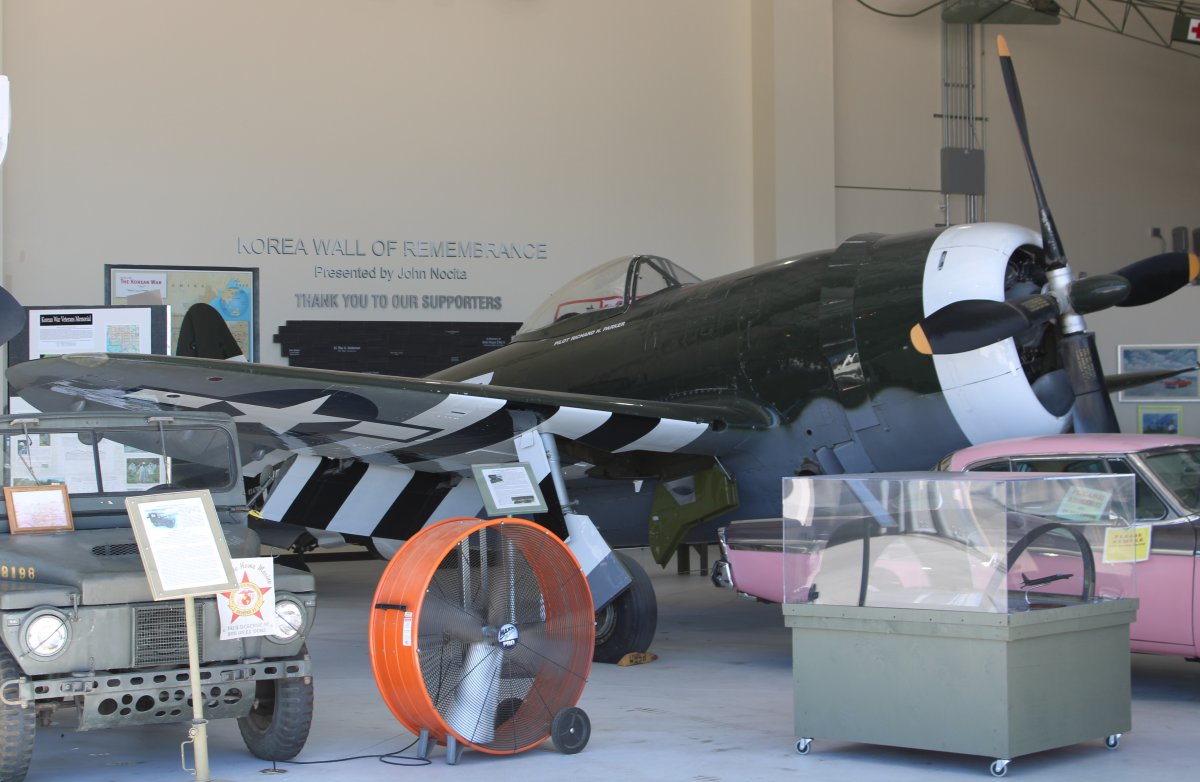 |
|
| Out on the flightline in the clear desert air. |
| |
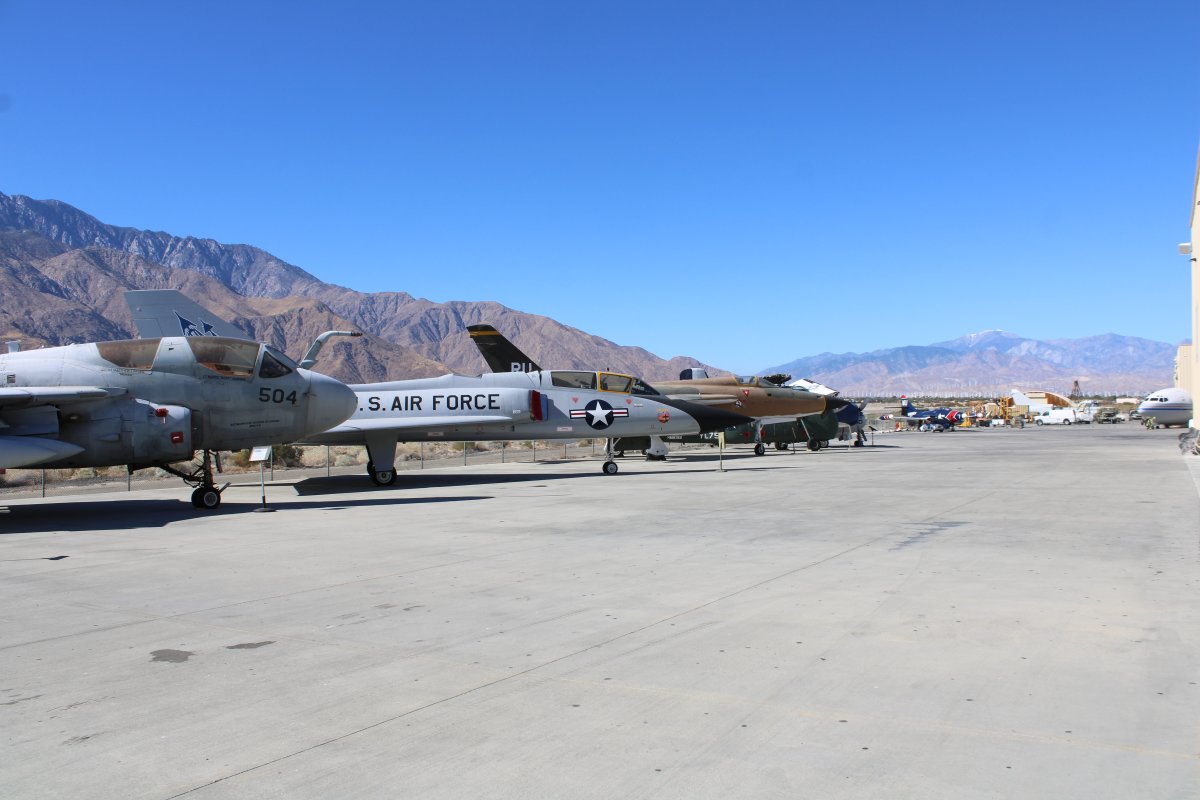 |
|
|
The Air Museum is on one side of the Palm Springs International Airport. You can see the control tower across the field on the left. The San Jacinto Mountains are in the background.
|
| |
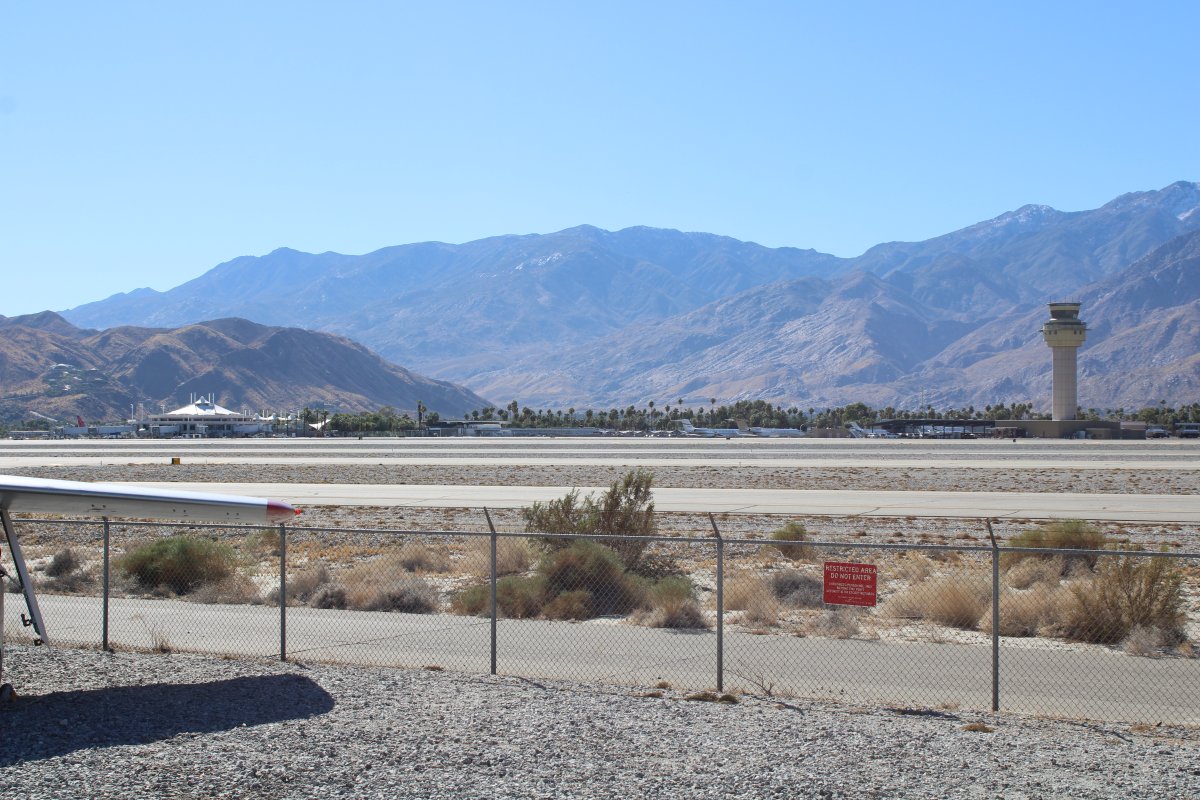 |
|
| P4 |
| |
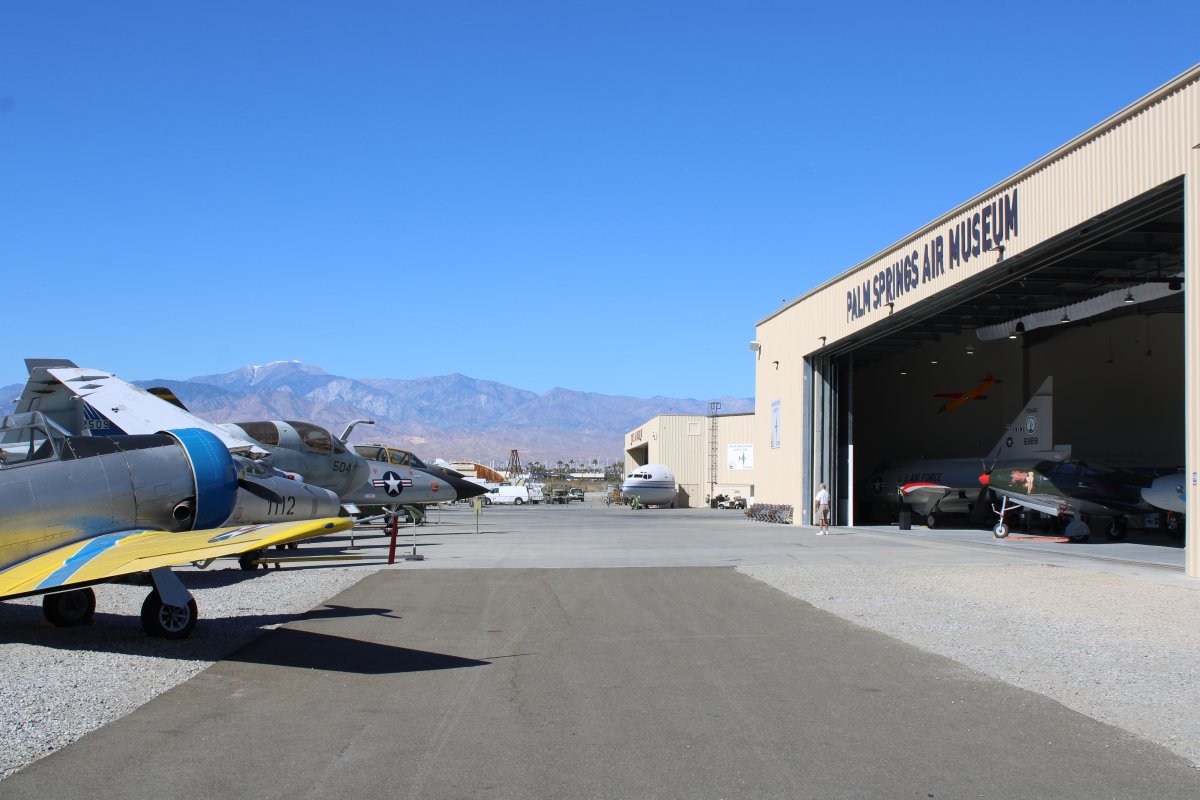 |
|
|
I don't think nose art like this is allowed in today's US military.
|
| |
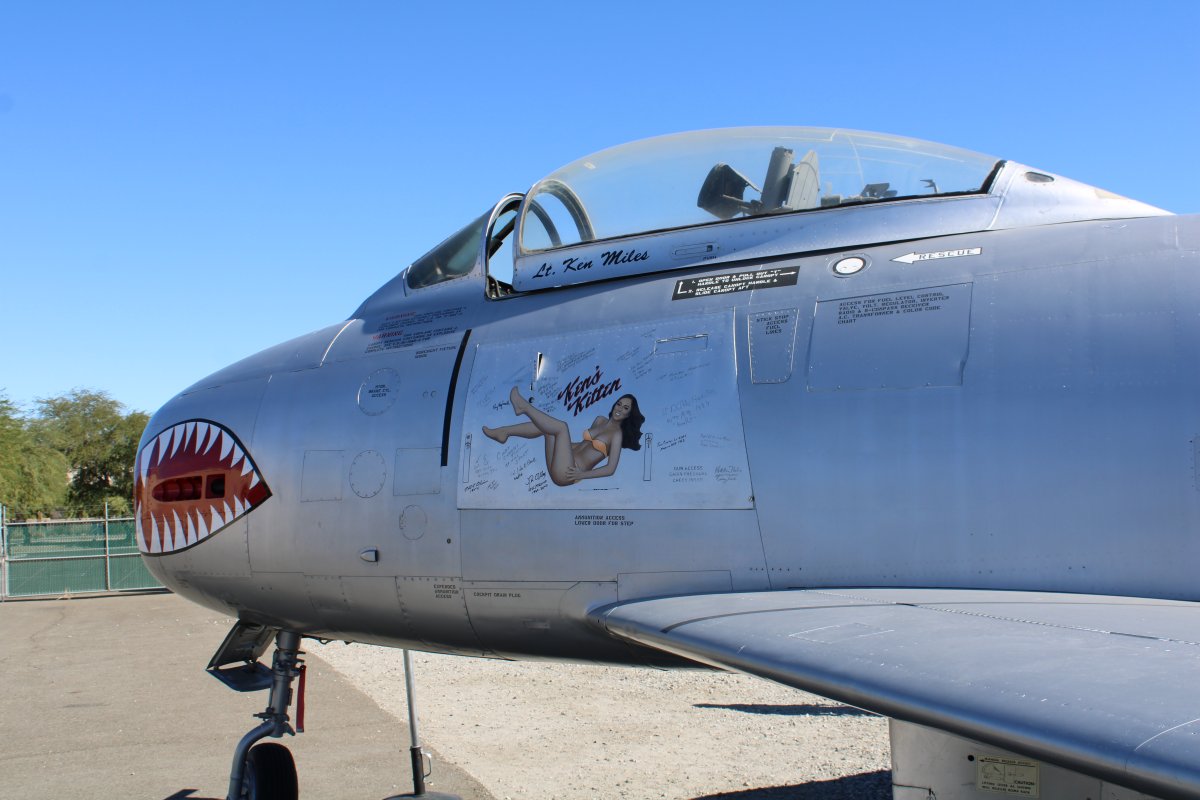 |
|
| Always have to include a picture of my favorite plane: the F-14 Tomcat. |
| |
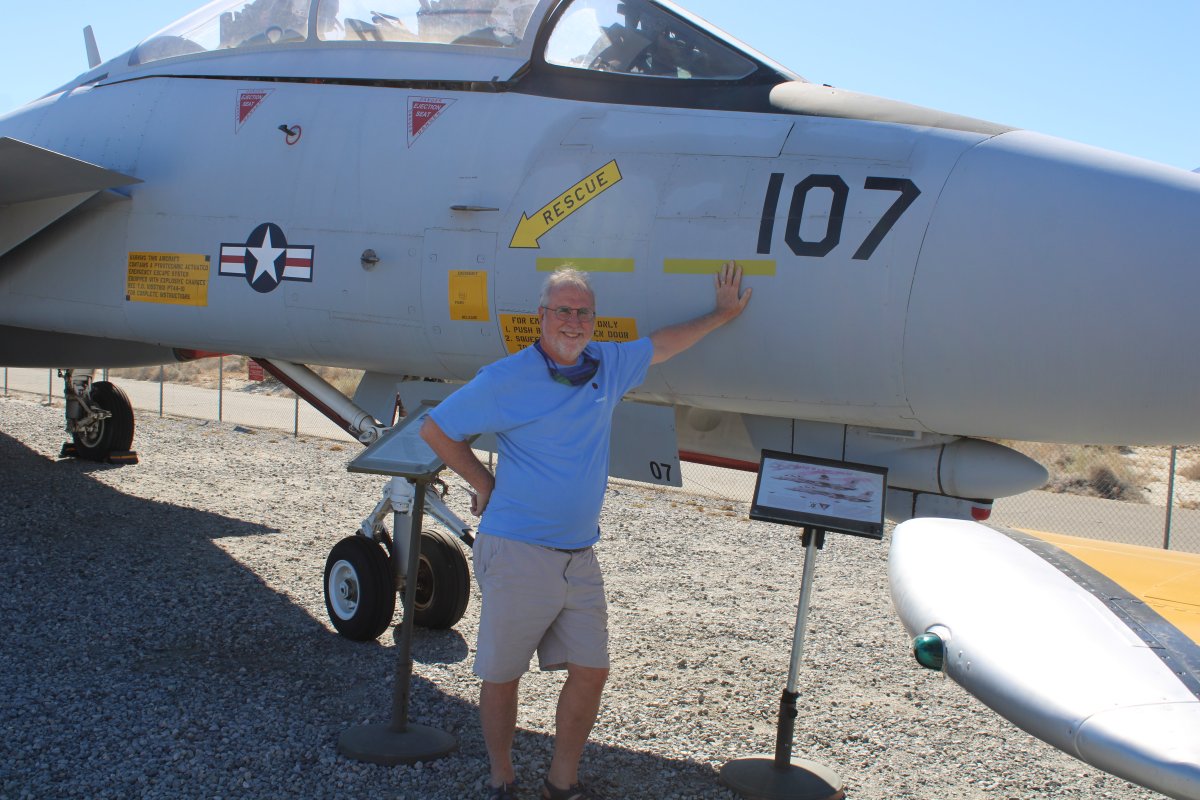 |
|
| North American F-100 Super Sabre. The F-100 served with the United States Air Force from 1954 to 1971 and with the Air National Guard (ANG) until 1979. The first of the Century Series of USAF jet fighters, it was the first USAF fighter capable of supersonic speed in level flight. The F-100 was designed by North American Aviation as a higher performance follow-on to the F-86 Sabre air superiority fighter. Adapted as a fighter-bomber, the F-100 was superseded by the high speed F-105 Thunderchief for strike missions over North Vietnam. The F-100 flew extensively over South Vietnam as the air force's primary close air support jet until being replaced by the more efficient subsonic LTV A-7 Corsair II. |
| |
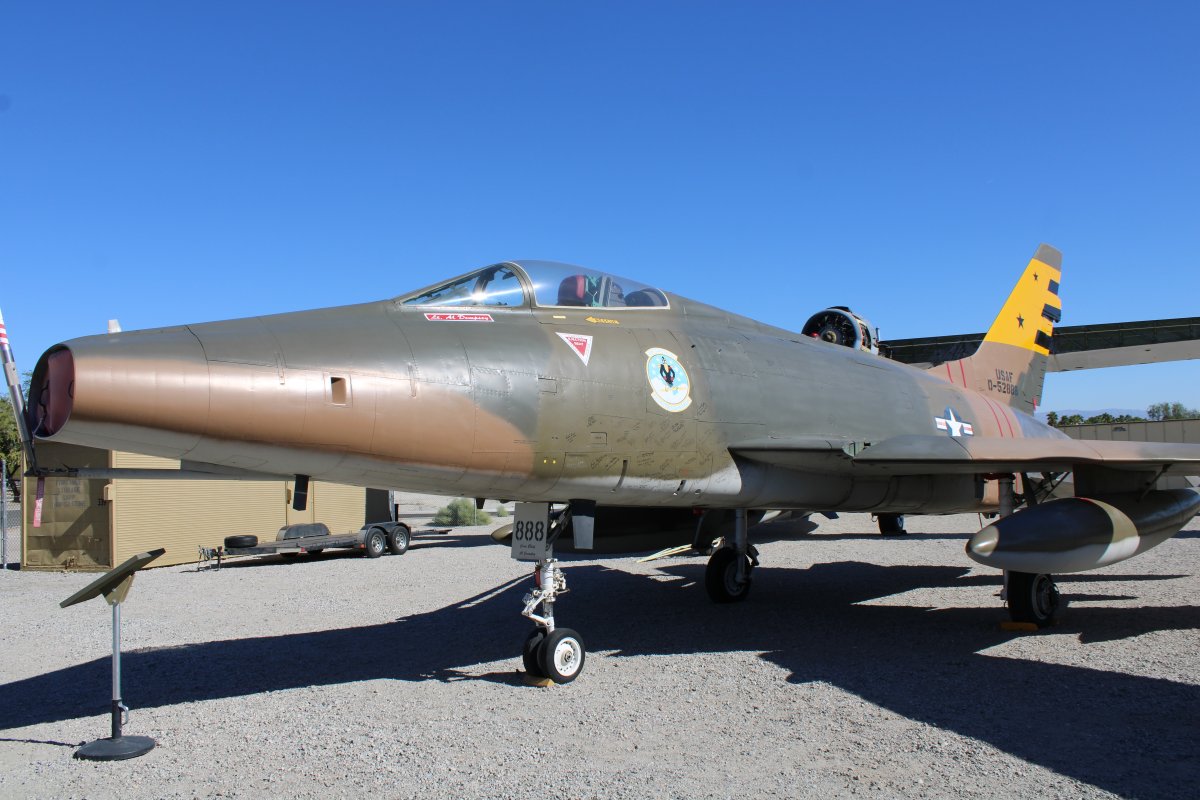 |
|
| |
| |
 |
|
A big old PBY Catalina flying boat missing the leading edges on its wings and some propellers. |
| |
 |
|
|
Imaculate Bell P-63 Kingcobra. This one looks very airworthy.
In World War II, the P-63 was not accepted for combat use by the United States Army Air Forces. However, 2,397 were used during World War II by the Soviet Air Force, provided by Lend-Lease.
|
| |
 |
|
|
Another one of my favorite planes -- the Douglas SBD Dauntless dive bomber. The SBD was an excellent naval scout plane and dive bomber. It possessed long range, good handling characteristics, maneuverability, potent bomb load, great diving characteristics from the perforated dive brakes, good defensive armament, and ruggedness.
This particular aircraft was restored after being raised off the bottom of Lake Michigan.
|
| |
 |
|
| This is what the Dauntless looked like just after being raised out of Lake Michigan. |
| |
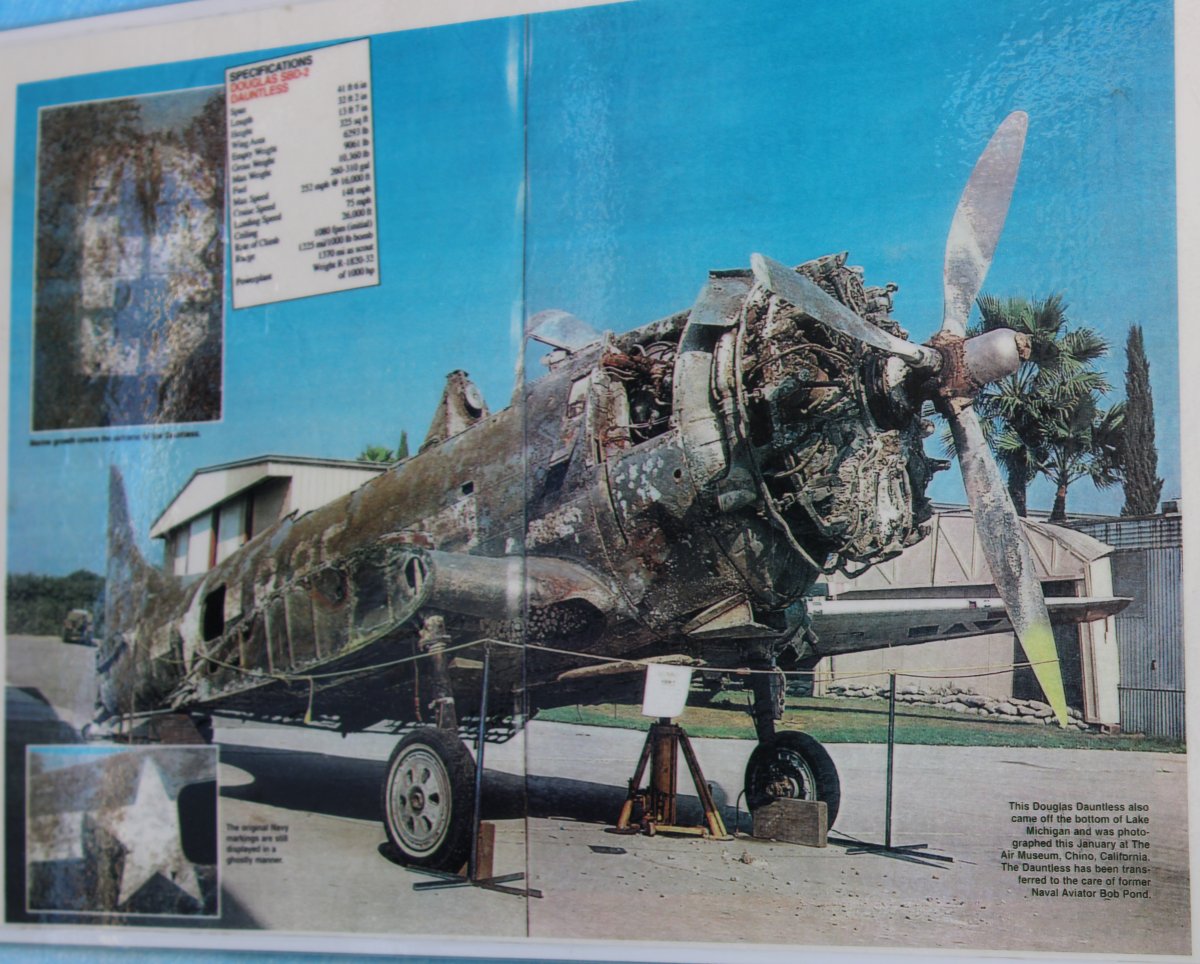 |
|
| Why was the Dauntless at the bottom of Lake Michigan? During World War II, the US Navy operated two training aircraft carriers on the Great Lakes to qualify carrier pilots. The training carriers were converted luxury side-wheel steamer cruise ships. Many rookie pilots crashed their planes into the water during training. This Dauntless was one of them. |
| |
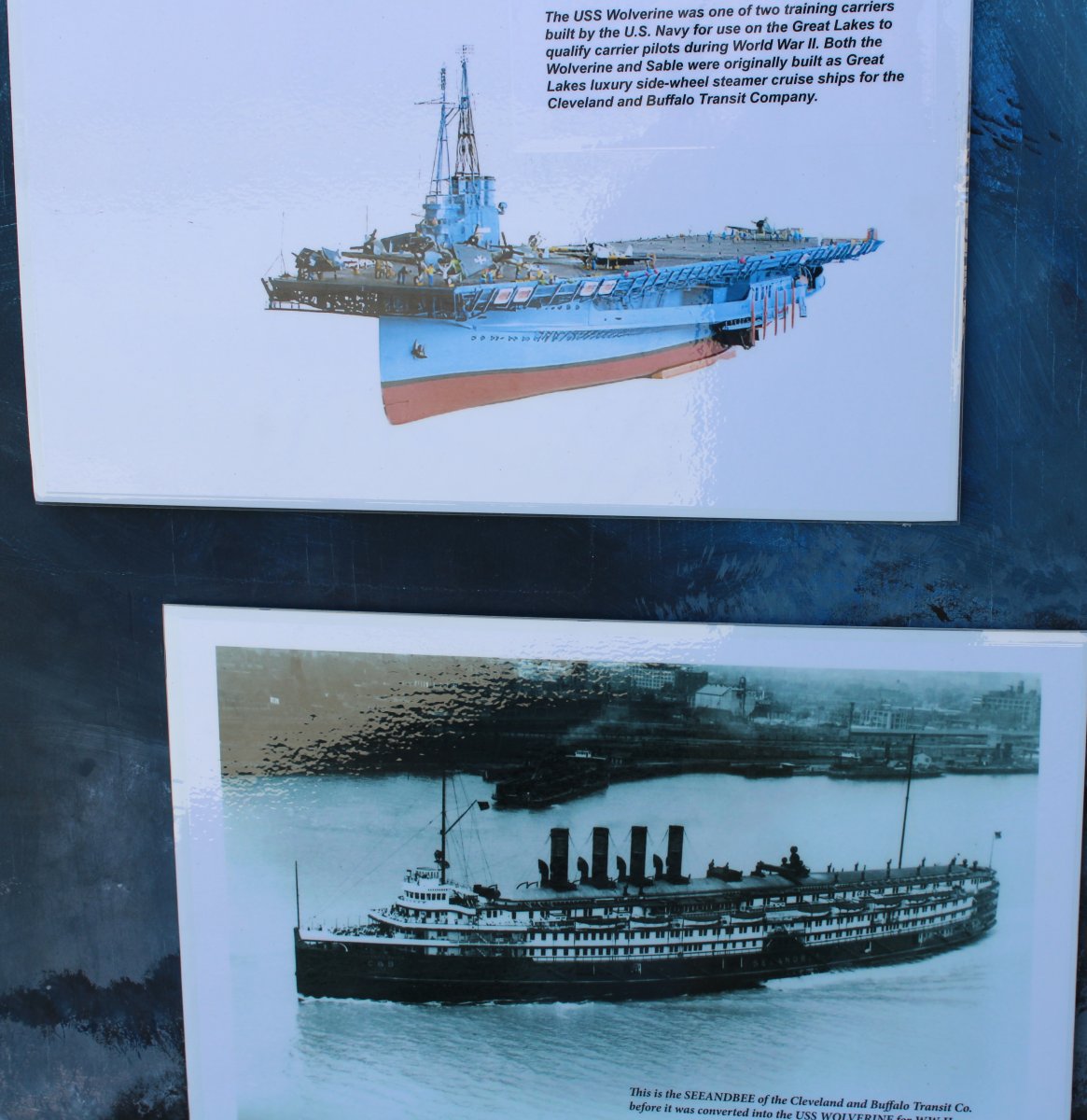 |
|
|
The Rolls-Royce Merlin engine fitted into this P-51 is a big reason the Mustang was such a great fighter plane.
|
| |
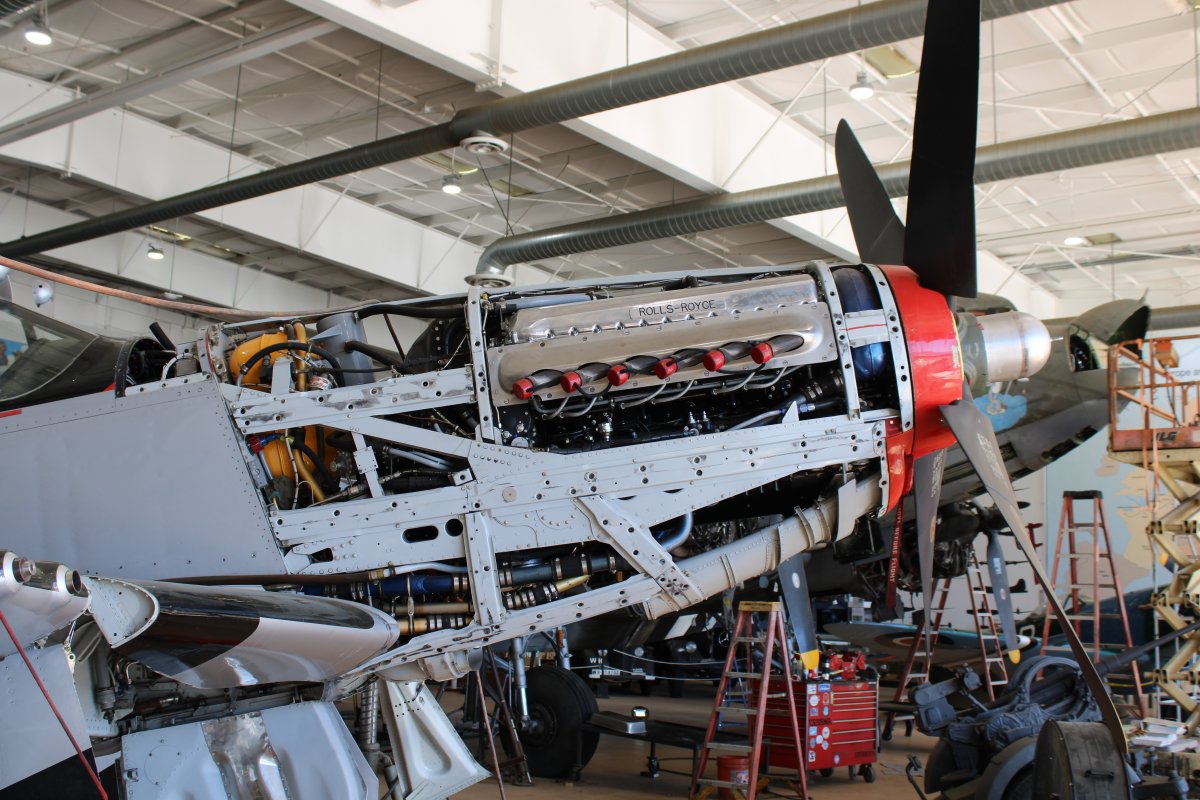 |
|
|
The museum had some great pictures of the Wright Brothers and their Flyers that I had not seen before.
This is a picture taken at Huffman Prairie on the outskirts of Dayton, Ohio. During 1904-1905, the Wright Brothers perfected their flying machine here.
|
| |
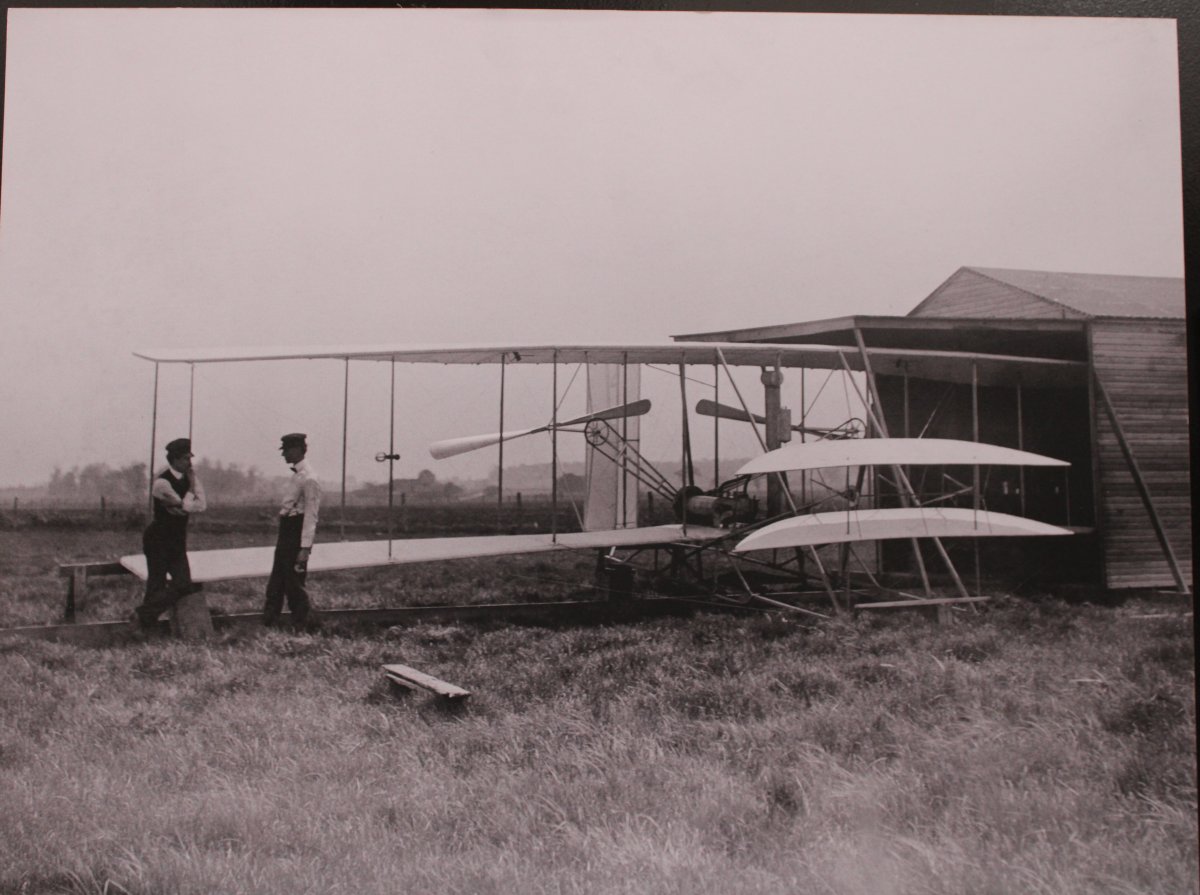 |
|
|
The Flyer at Kitty Hawk, ready to go on the catapult rail.
|
| |
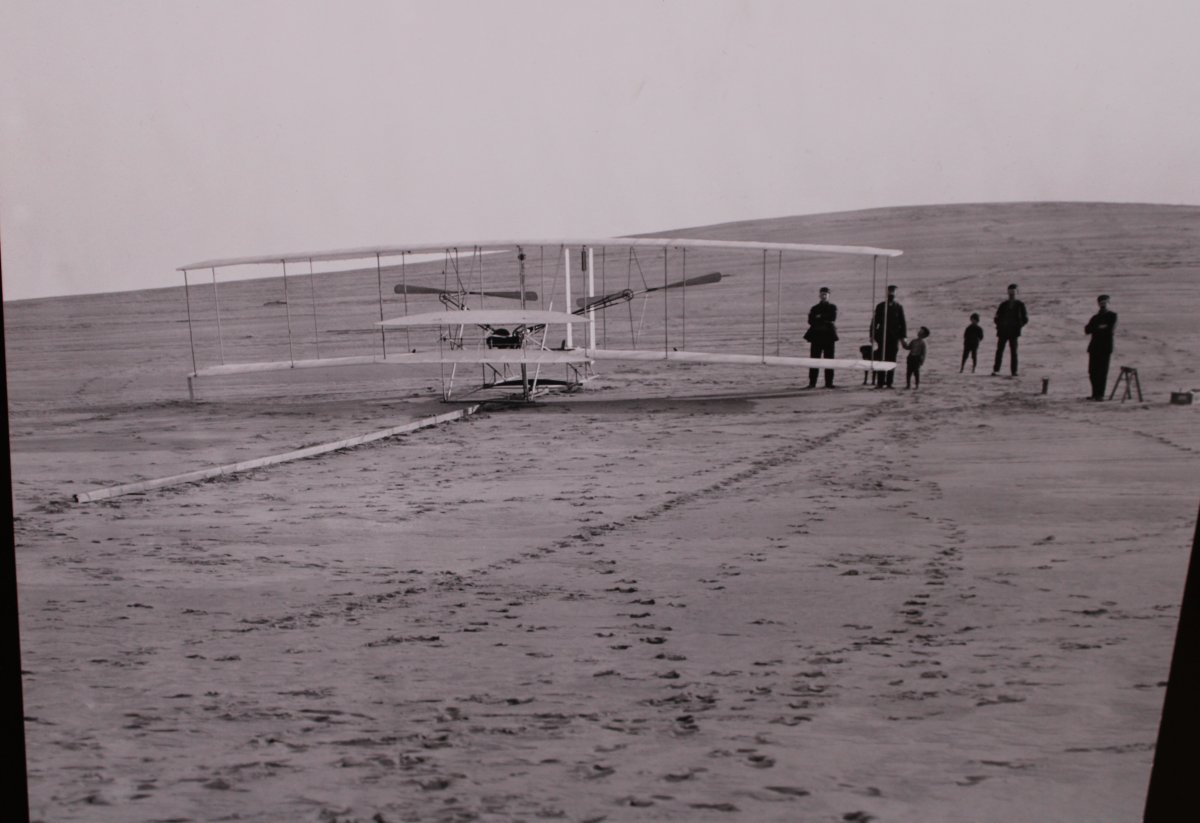 |
|
| The Flyer after a hard landing? |
| |
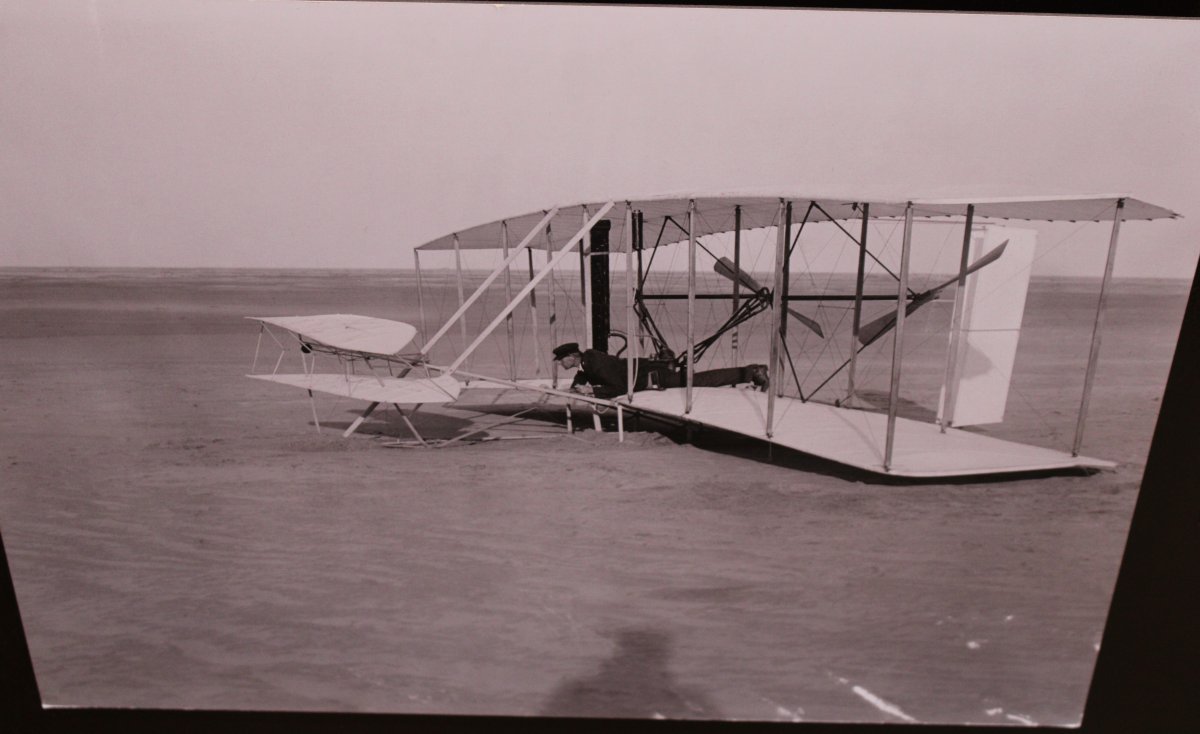 |
|
| Two aviation greats: Charles Lindbergh and Orville Wright. |
| |
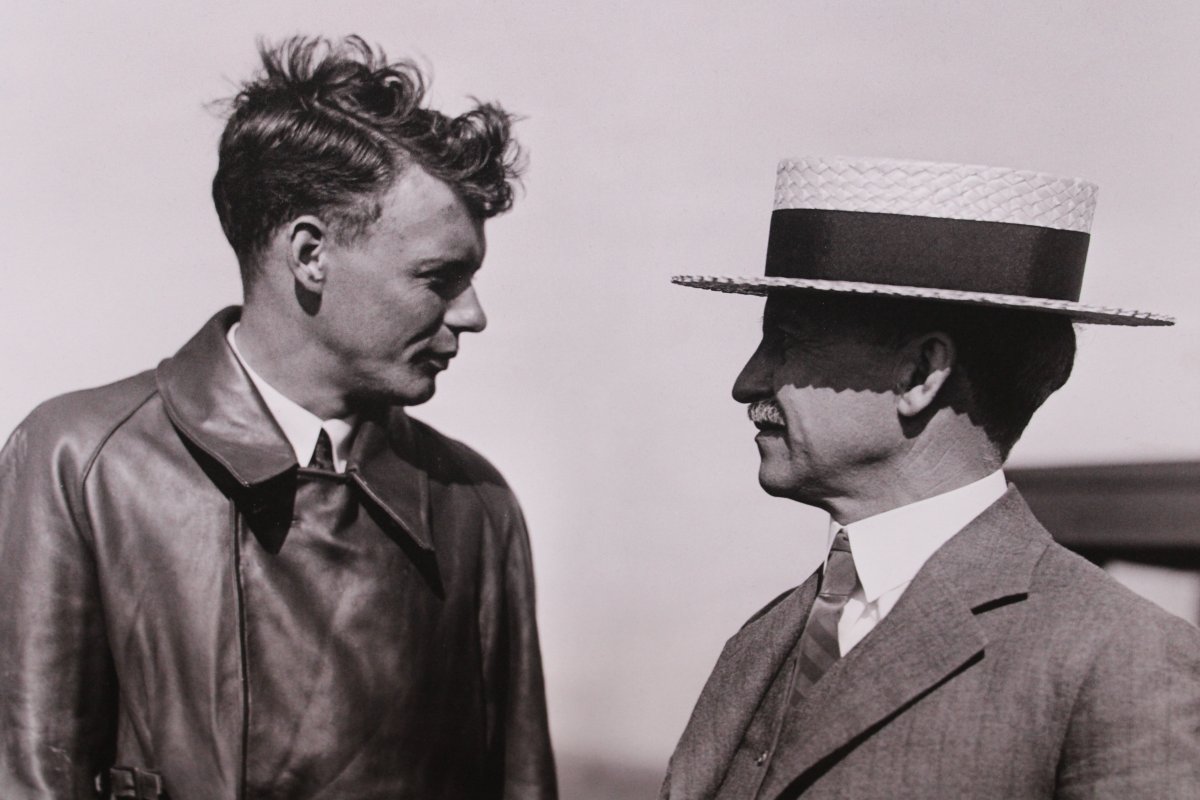 |
|
|
A Wright soaring in 1902. The brothers taught themselves how to fly in the glider in 1902; then they were ready to add power in 1903.
|
| |
 |
|
|
In October 1911, Orville Wright returned to the Outer Banks again, to conduct safety and stabilization tests with a new glider. On October 24, he soared for 9 minutes and 45 seconds, a record that held for almost 10 years, when gliding as a sport began in the 1920s.
|
| |
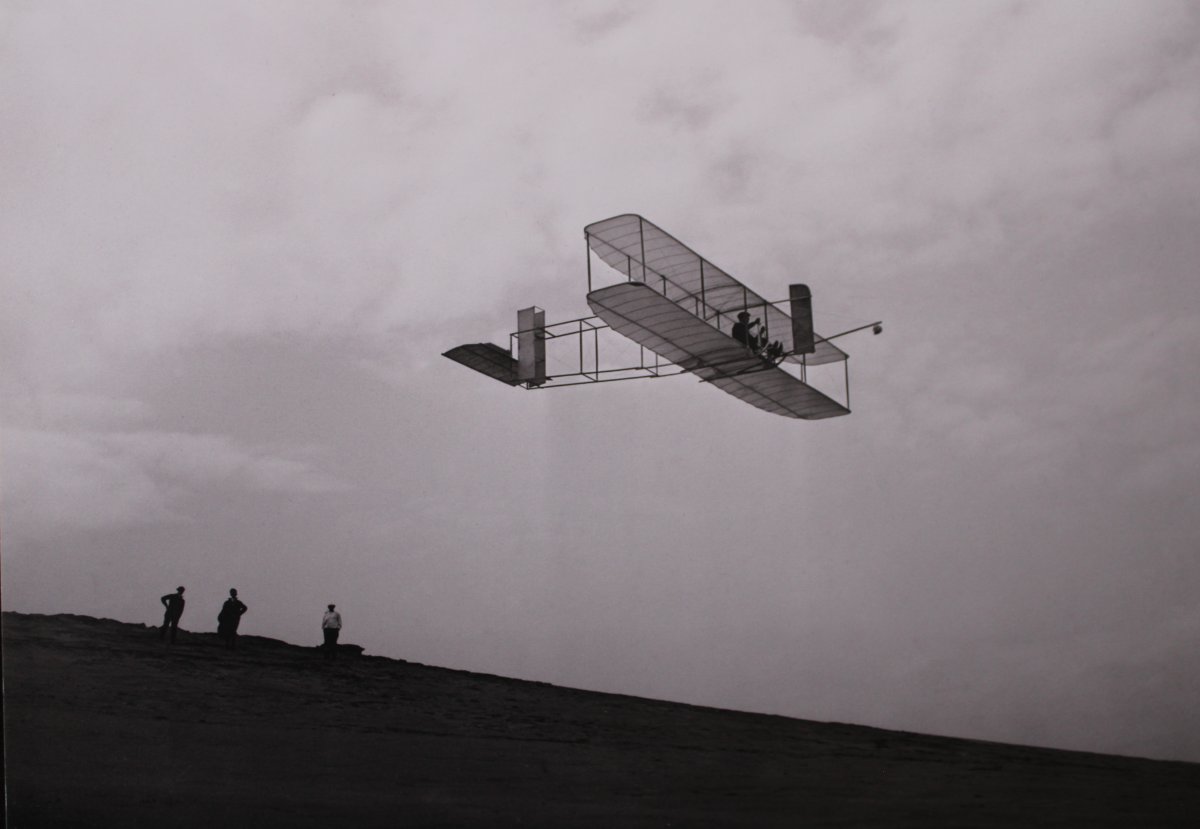 |
|
| Aviation art of Eugene Ely about to make the first ever landing on a ship -- the cruiser Pennsylvania with its stern converted into a landing deck. |
| |
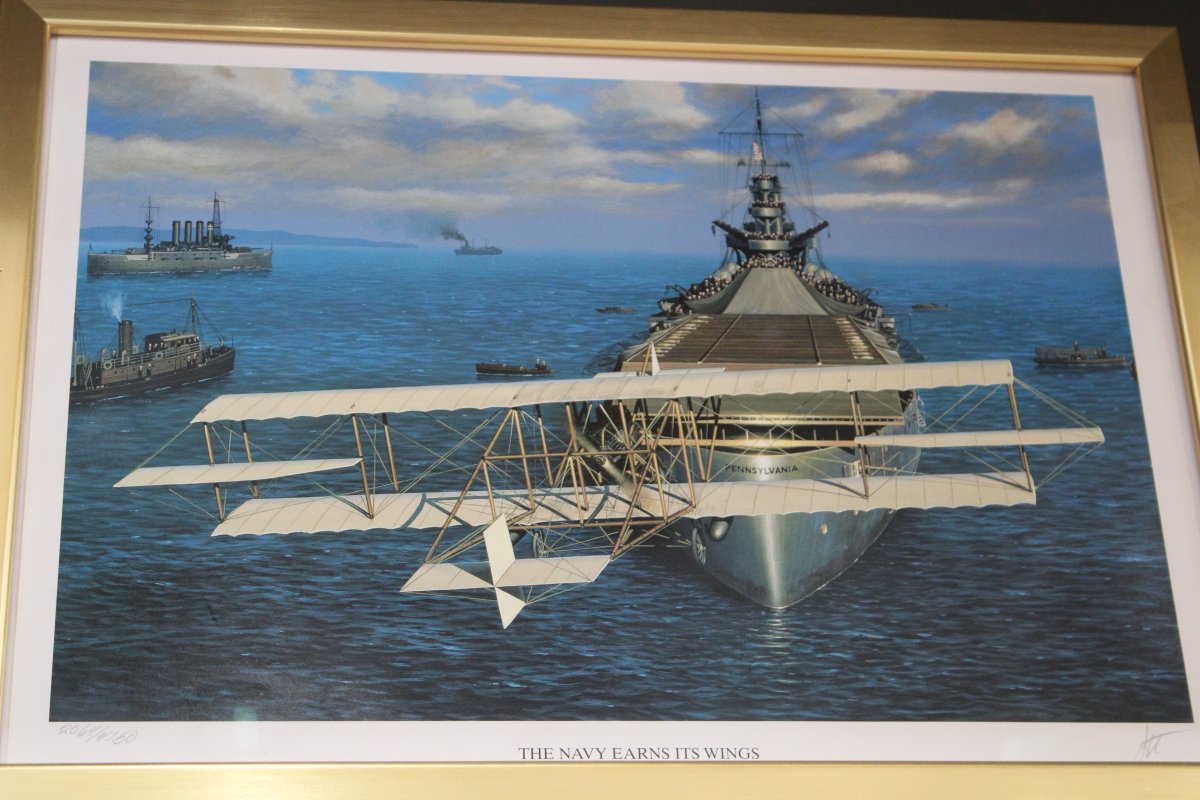 |
|
|
A Spitfire with a five-bladed prop gleams in the shadows.
|
| |
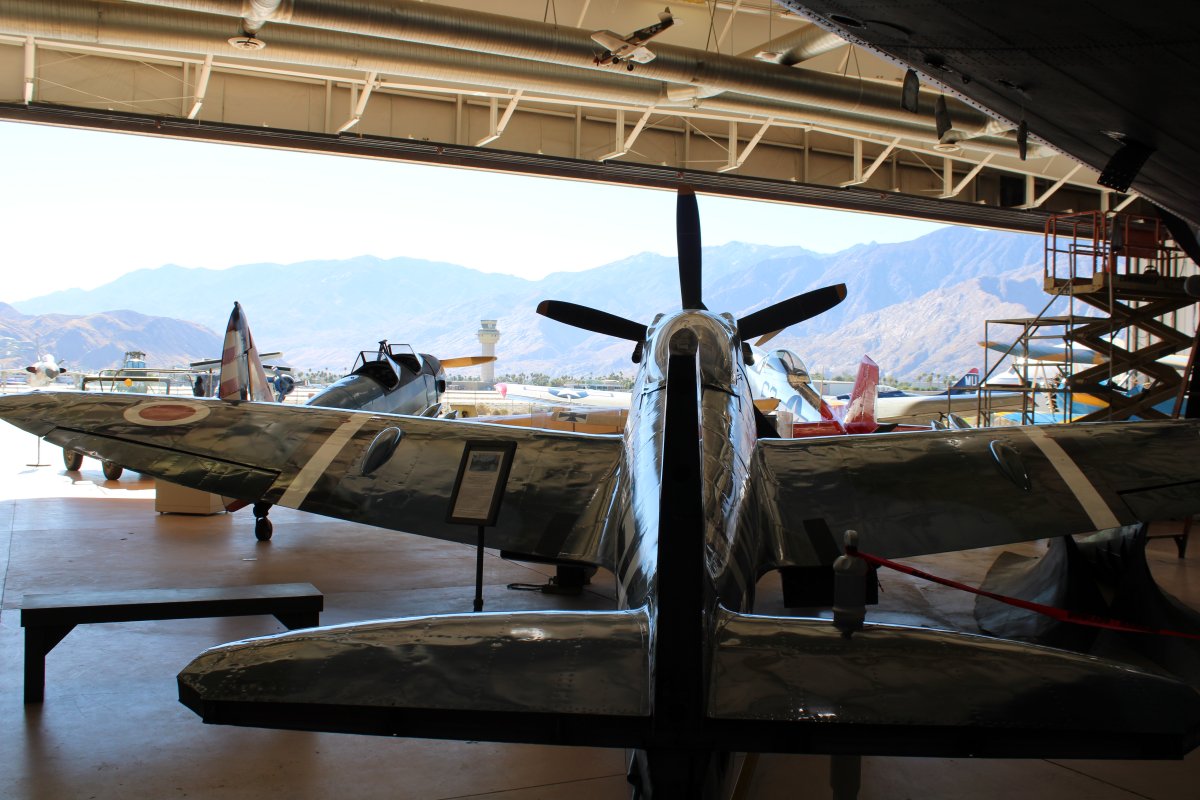 |
|
| A PT-19 Trainer. Remember the Cox U-control PT-19 trainer, with the .049 engine, we all had as a kid? This is the real thing. |
| |
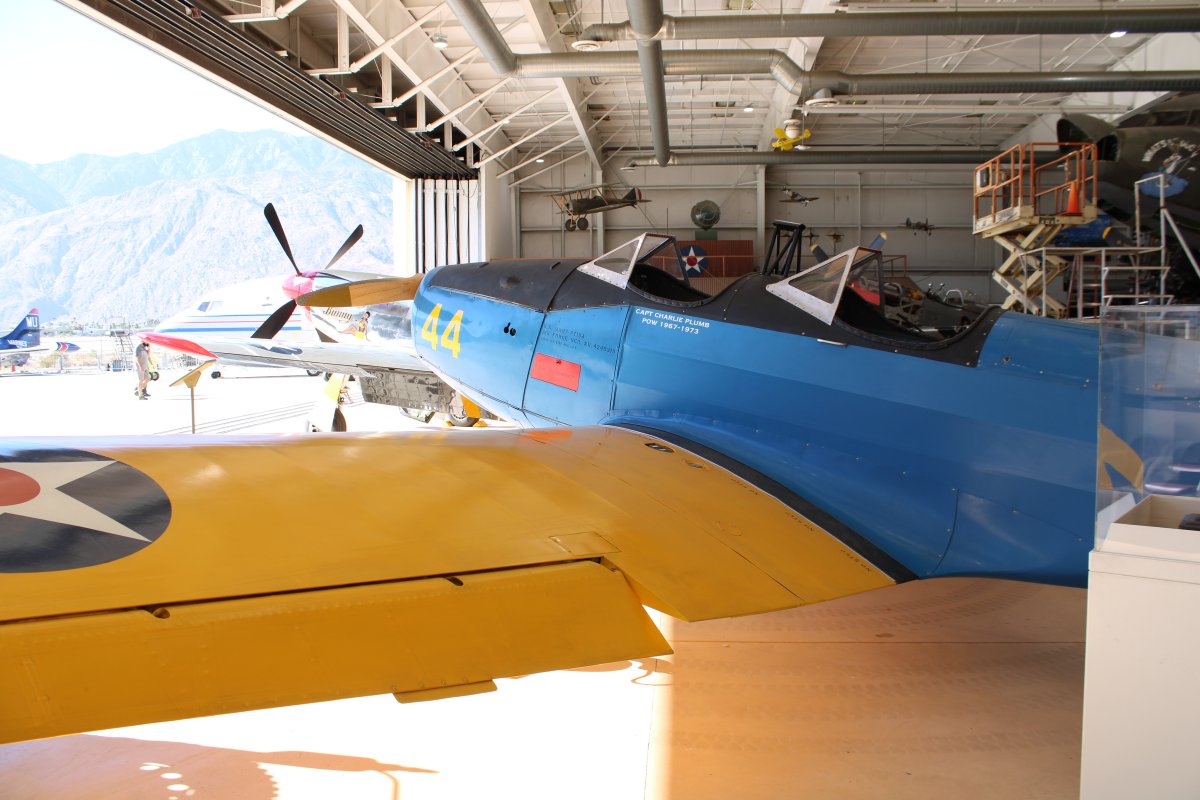 |
|
|
Probably the flagship airplane of the museum is this polished aluminum B-17 bomber: Miss Angela.
I really enjoyed the Palm Springs Aviation Museum. Recommended!
|
| |
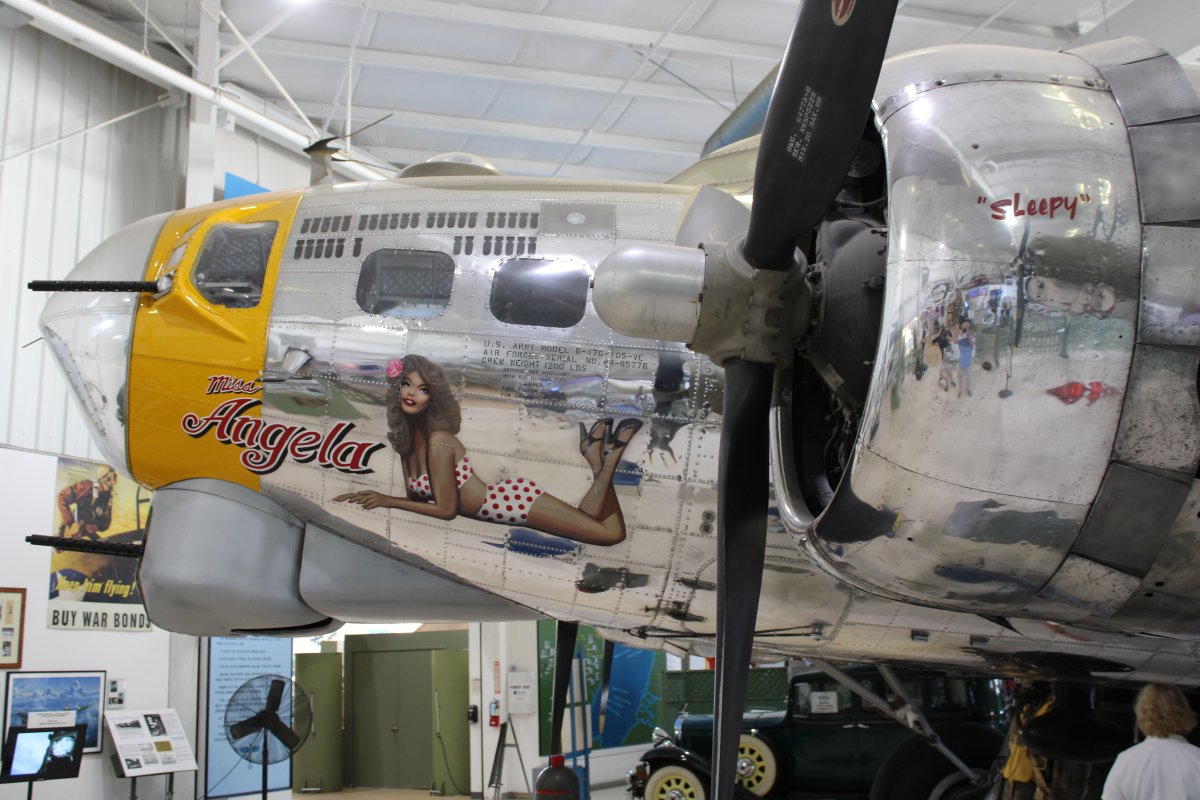 |
|
| |
| |
|
|
|
|
|
|












































